Master tooling for containers
A presentation at Microsoft Ignite in in Orlando, FL, USA by Baruch Sadogursky

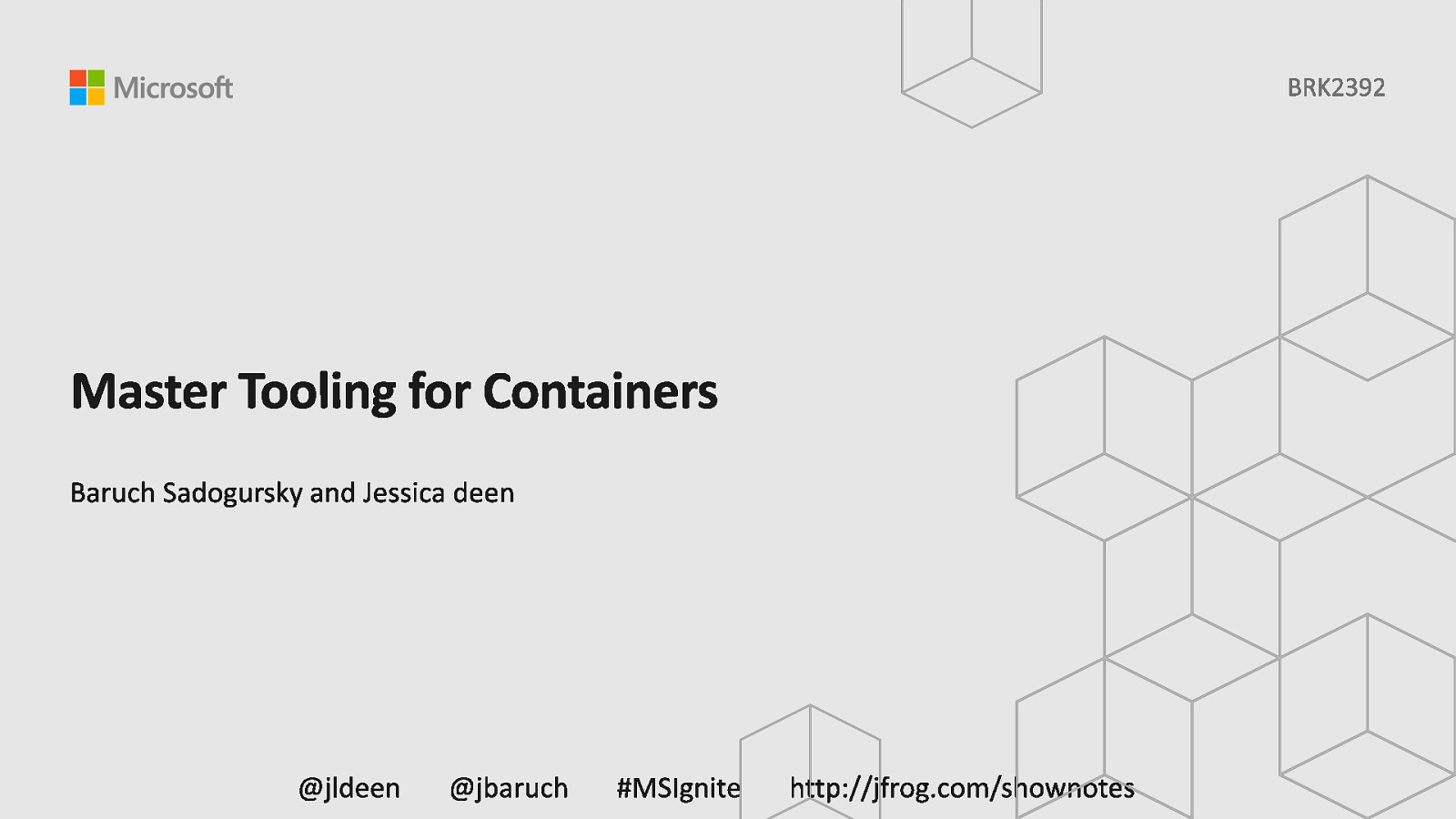
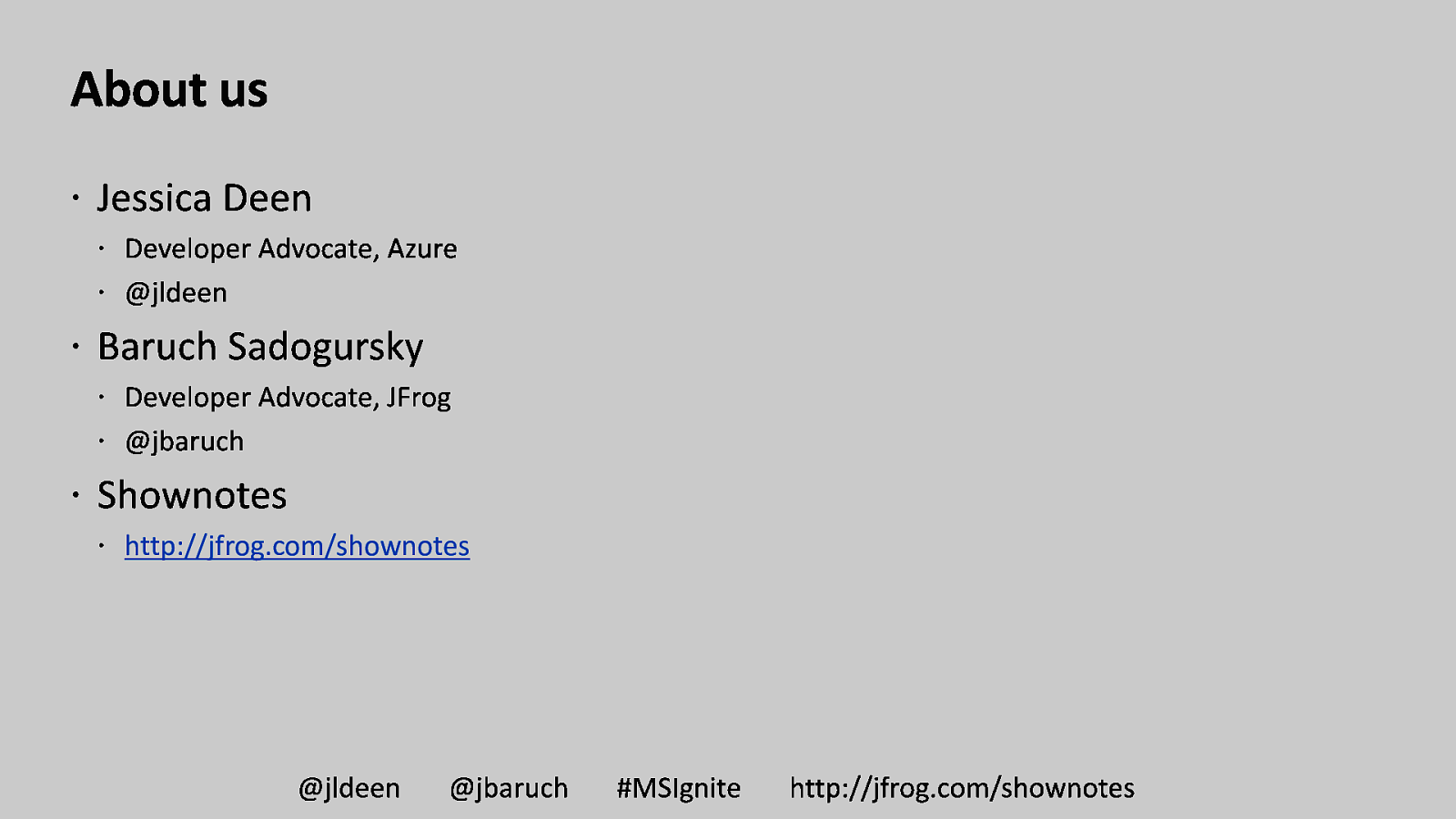
http://jfrog.com/shownotes
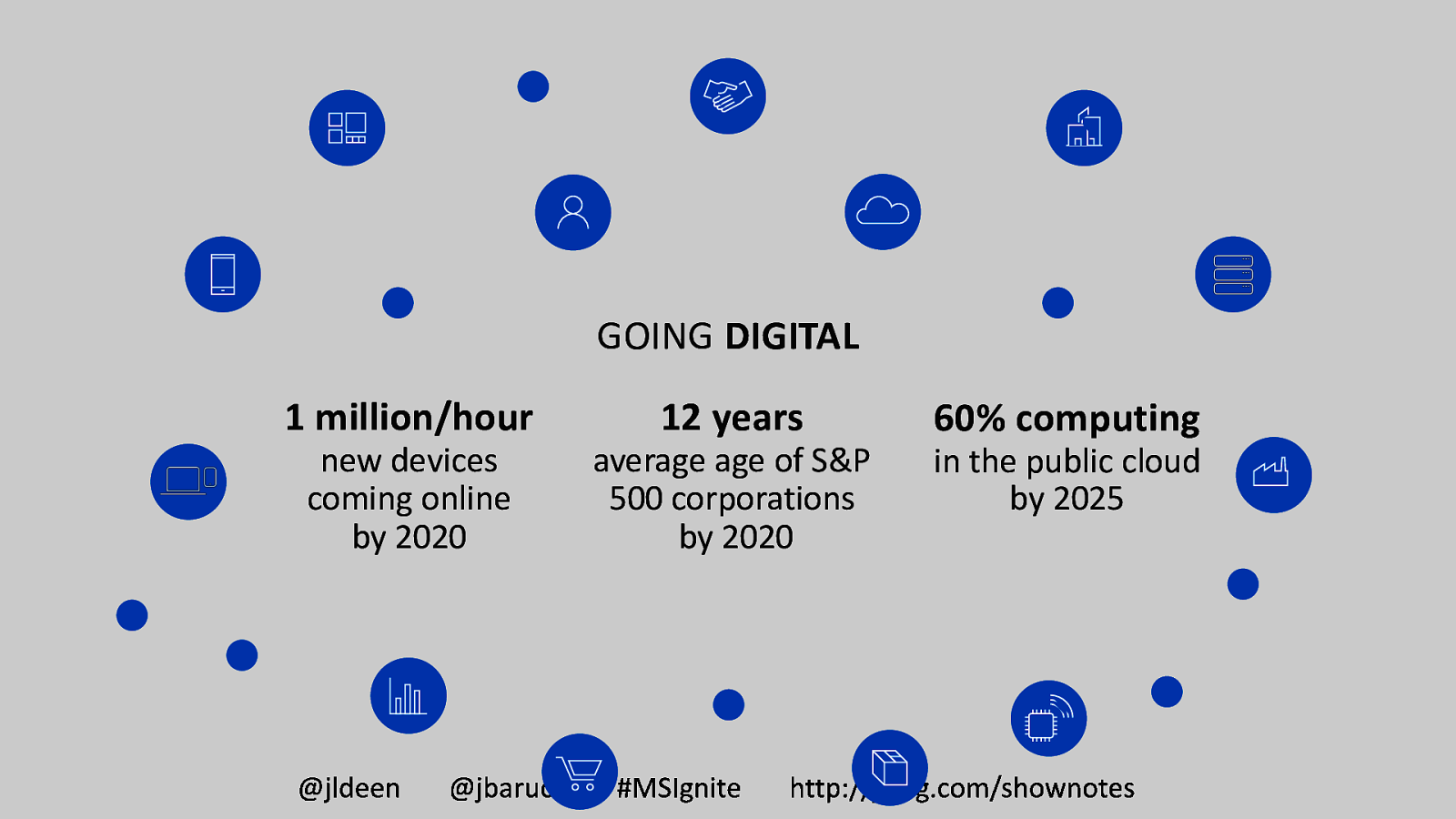
GOING DIGITAL 1 million/hour new devices coming online by 2020 12 years average age of S&P 500 corporations by 2020 60% computing in the public cloud by 2025
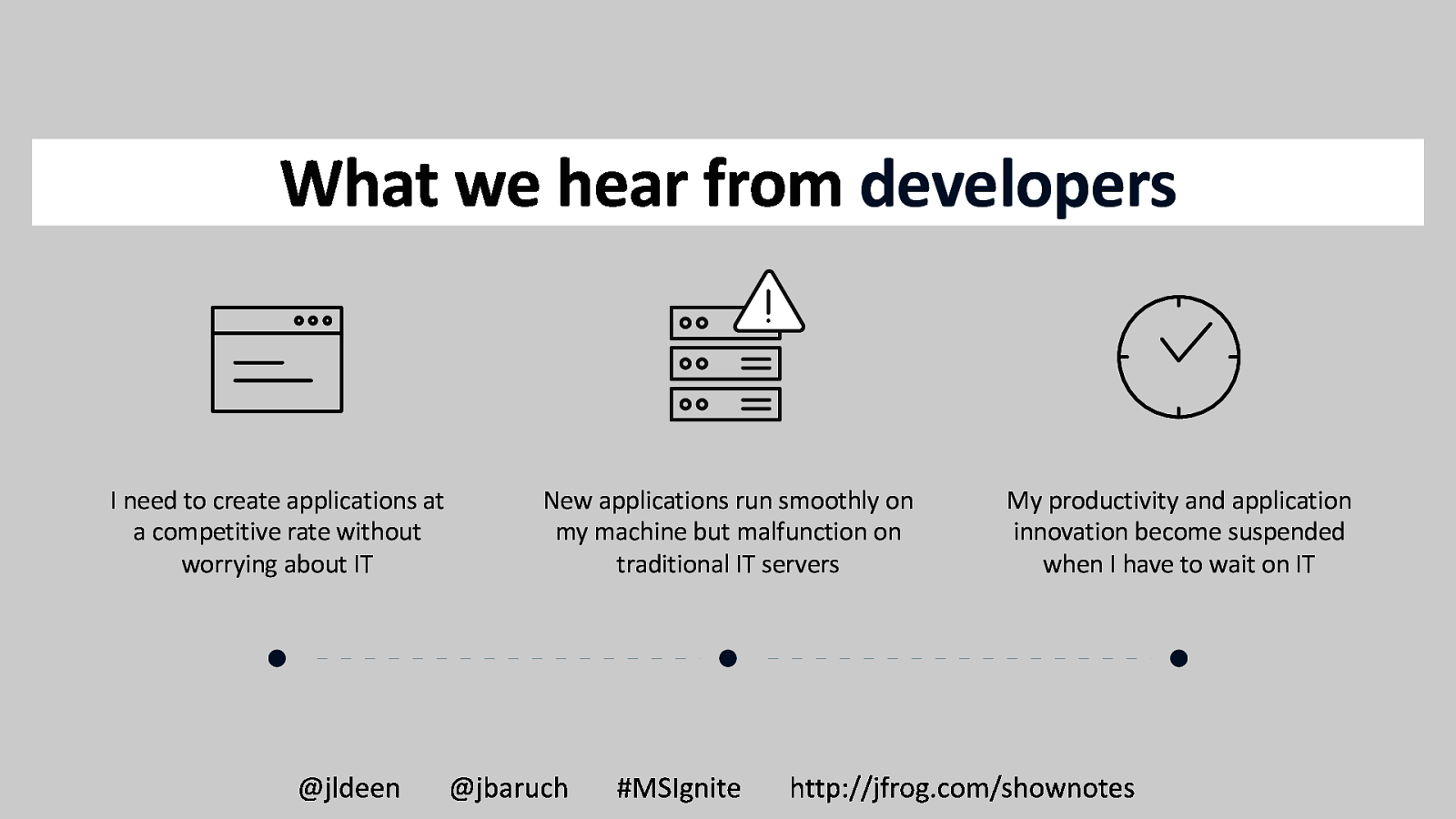
developers I need to create applications at a competitive rate without worrying about IT New applications run smoothly on my machine but malfunction on traditional IT servers My productivity and application innovation become suspended when I have to wait on IT
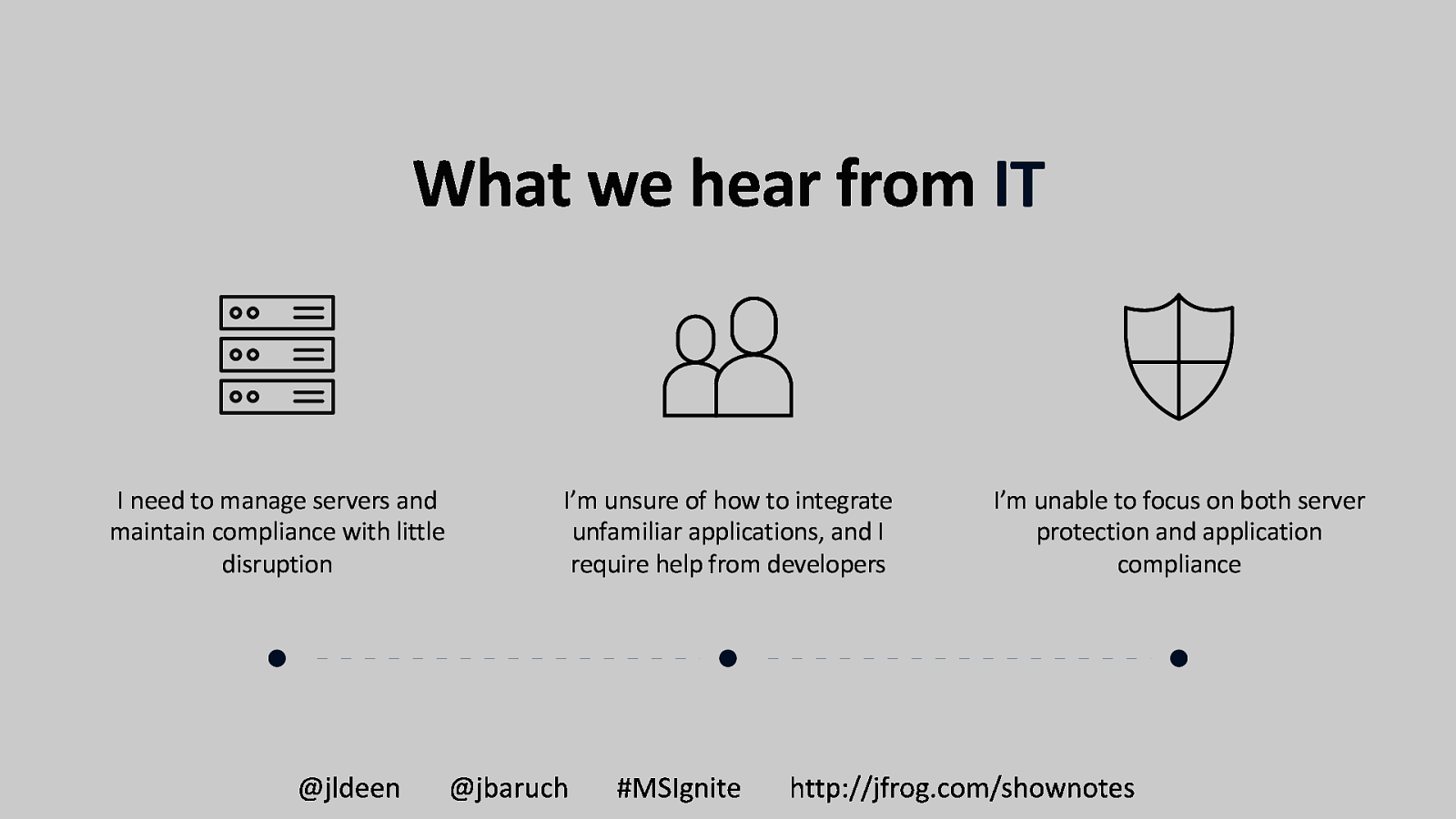
IT I need to manage servers and maintain compliance with little disruption I’m unsure of how to integrate unfamiliar applications, and I require help from developers I’m unable to focus on both server protection and application compliance
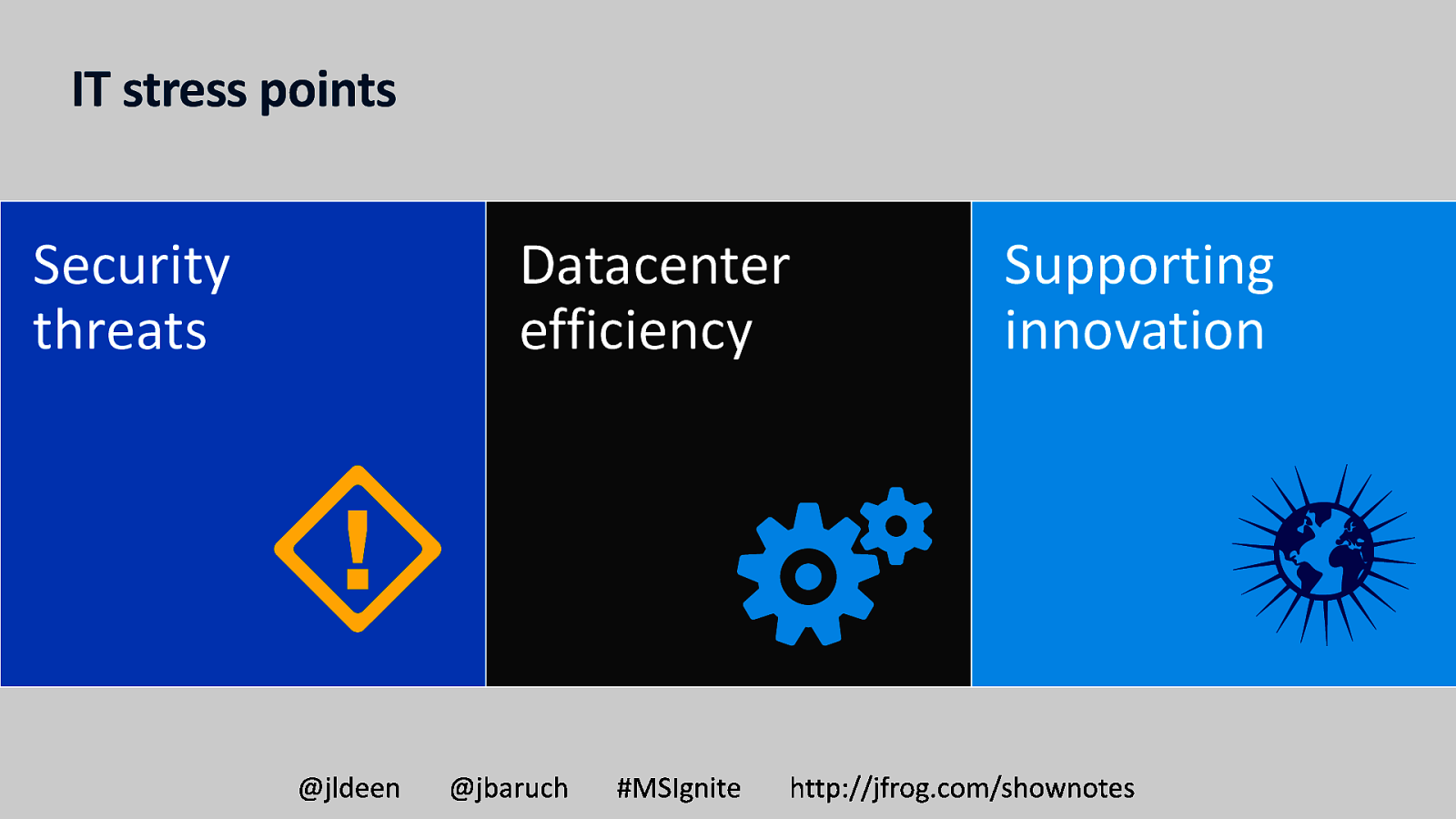
IT stress points Security threats Datacenter efficiency Supporting innovation
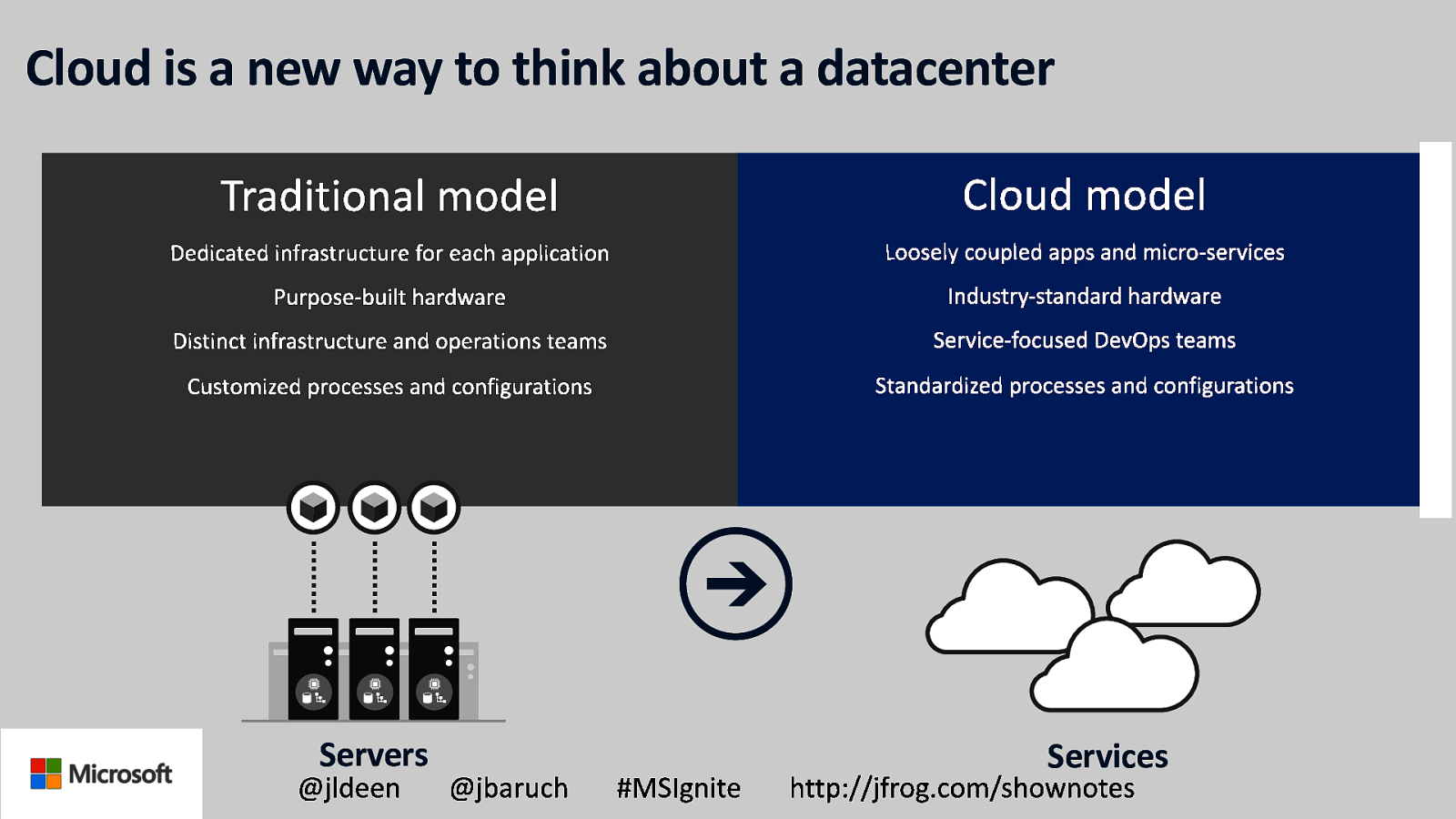
Cloud is a new way to think about a datacenter Servers Services
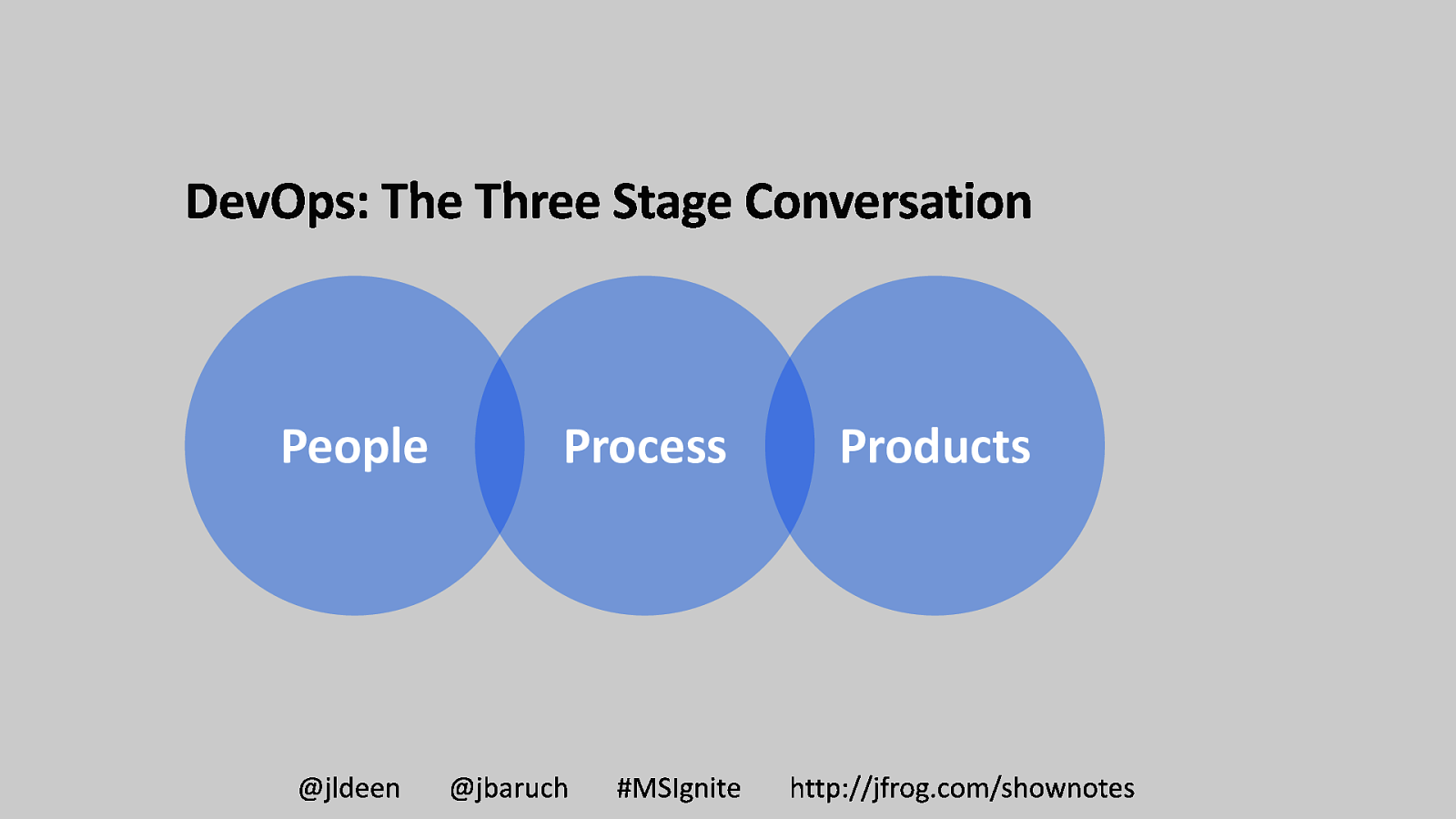
People Process Products
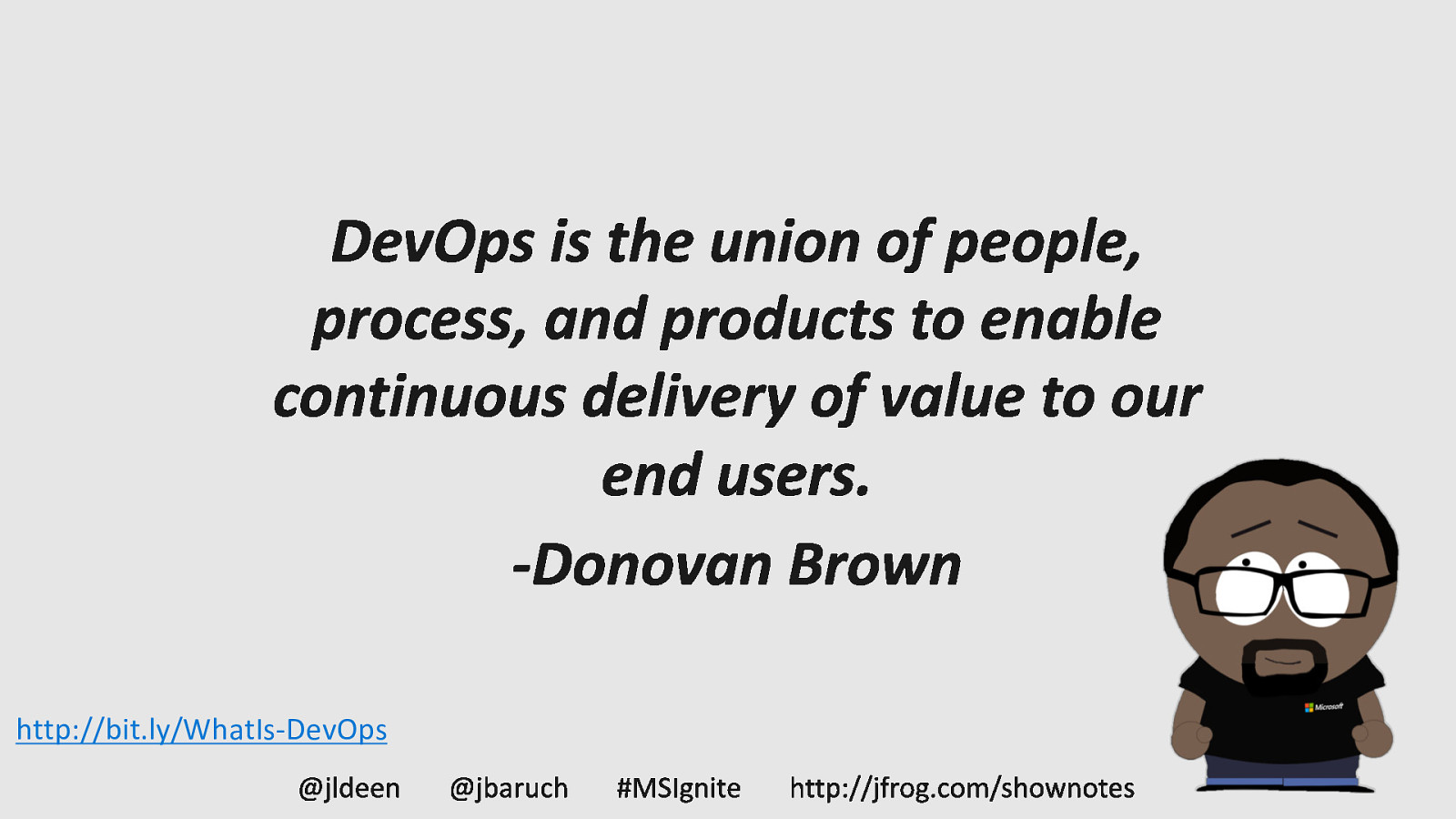
http://bit.ly/WhatIs-DevOps
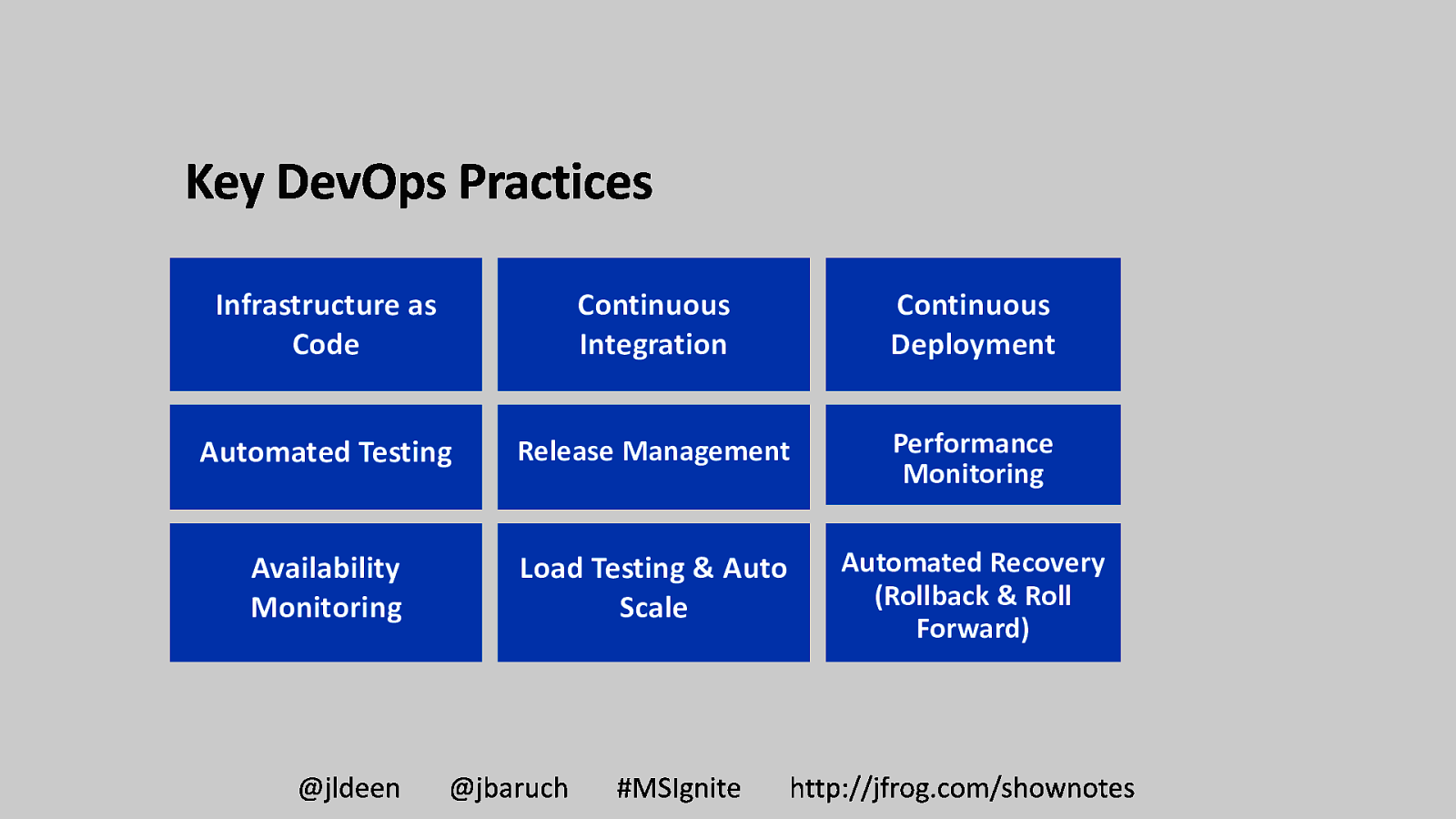
Infrastructure as Code Continuous Integration Continuous Deployment Automated Testing Release Management Performance Monitoring Availability Monitoring Load Testing & Auto Scale Automated Recovery (Rollback & Roll Forward)
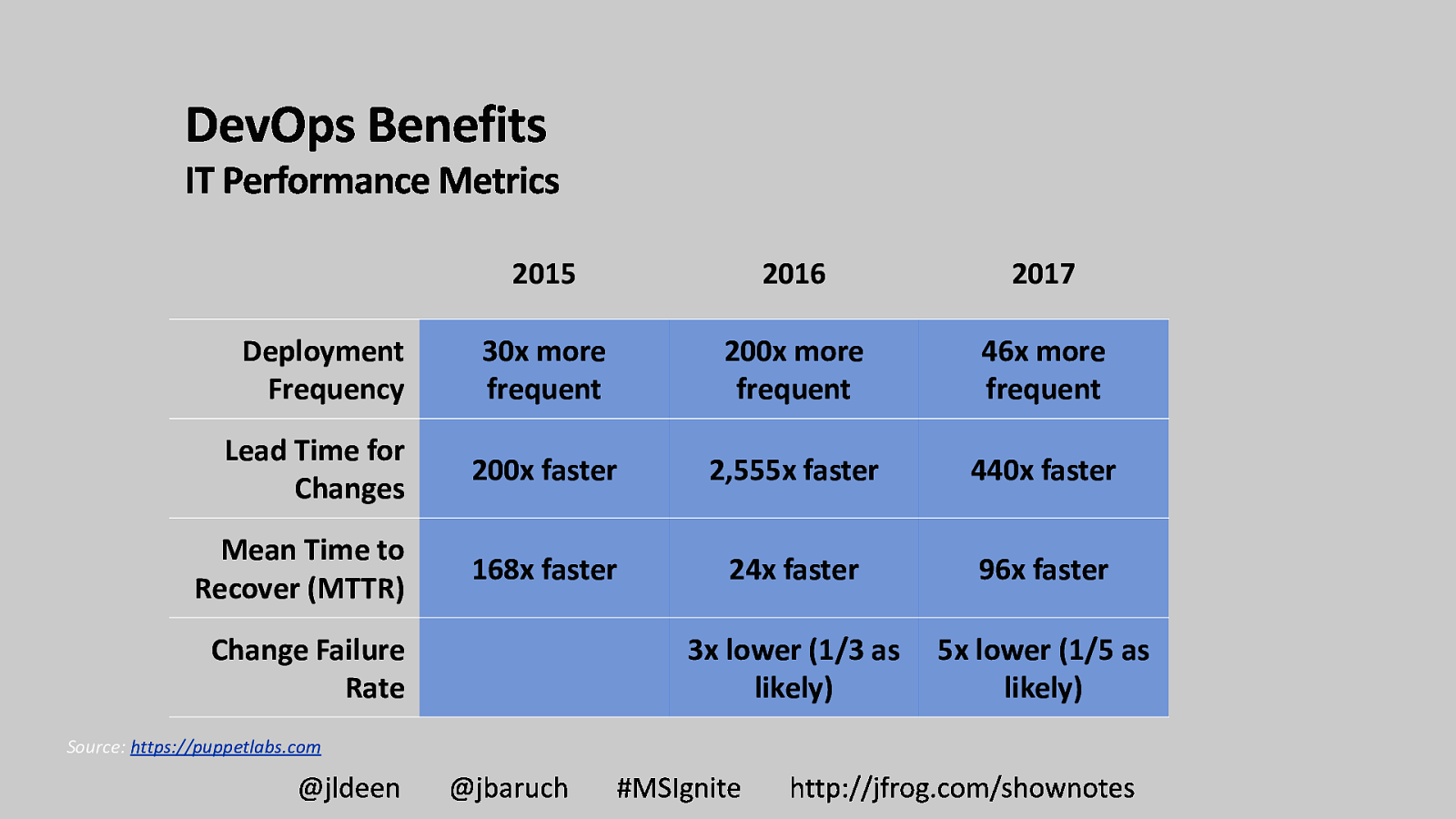
2015 2016 2017 Deployment Frequency 30x more frequent 200x more frequent 46x more frequent Lead Time for Changes 200x faster 2,555x faster 440x faster Mean Time to Recover (MTTR) 168x faster 24x faster 96x faster 3x lower (1/3 as likely) 5x lower (1/5 as likely) Change Failure Rate Source: https://puppetlabs.com
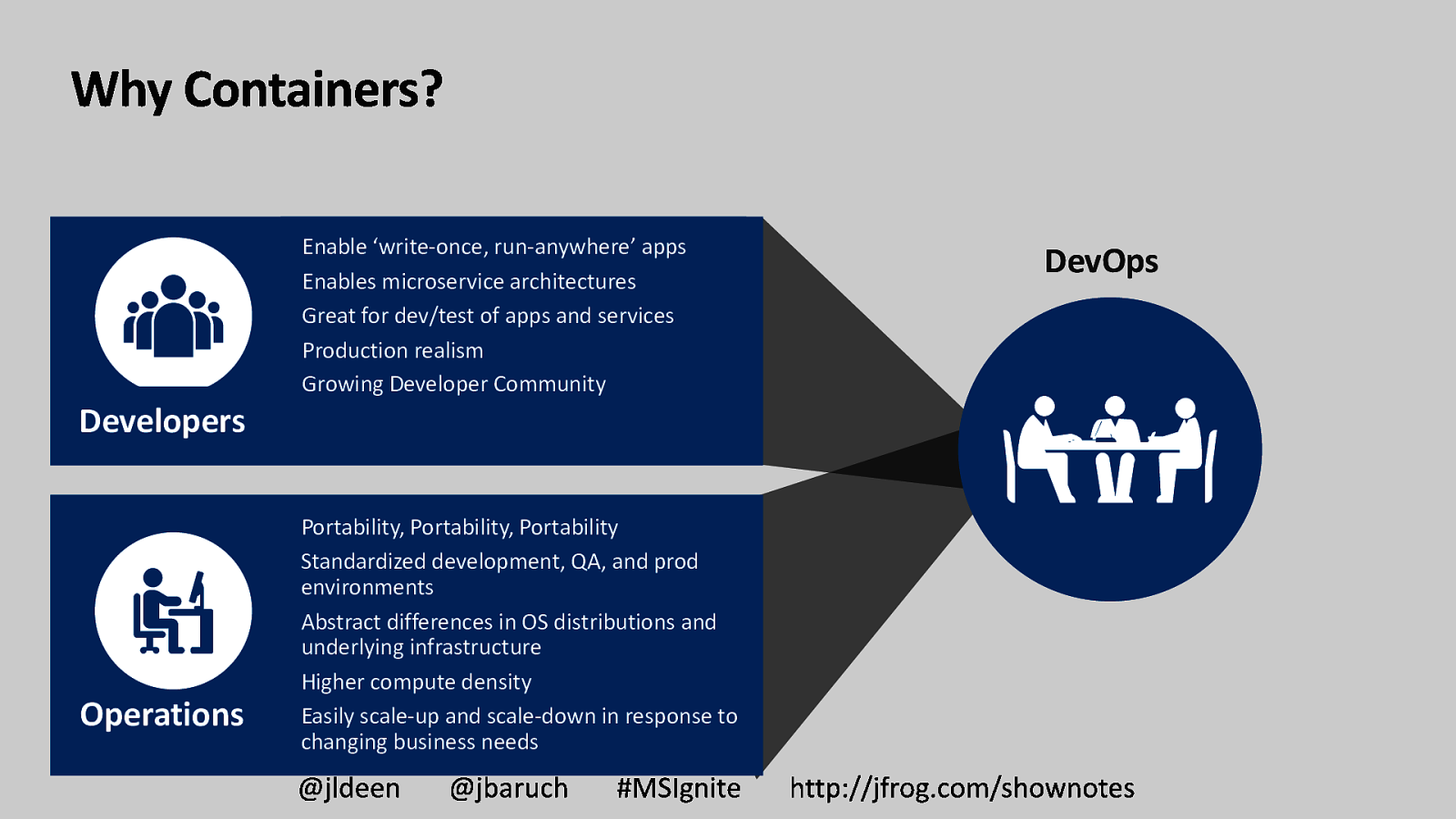
Developers Operations Enable ‘write-once, run-anywhere’ apps Enables microservice architectures Great for dev/test of apps and services Production realism Growing Developer Community Portability, Portability, Portability Standardized development, QA, and prod environments Abstract differences in OS distributions and underlying infrastructure Higher compute density Easily scale-up and scale-down in response to changing business needs DevOps
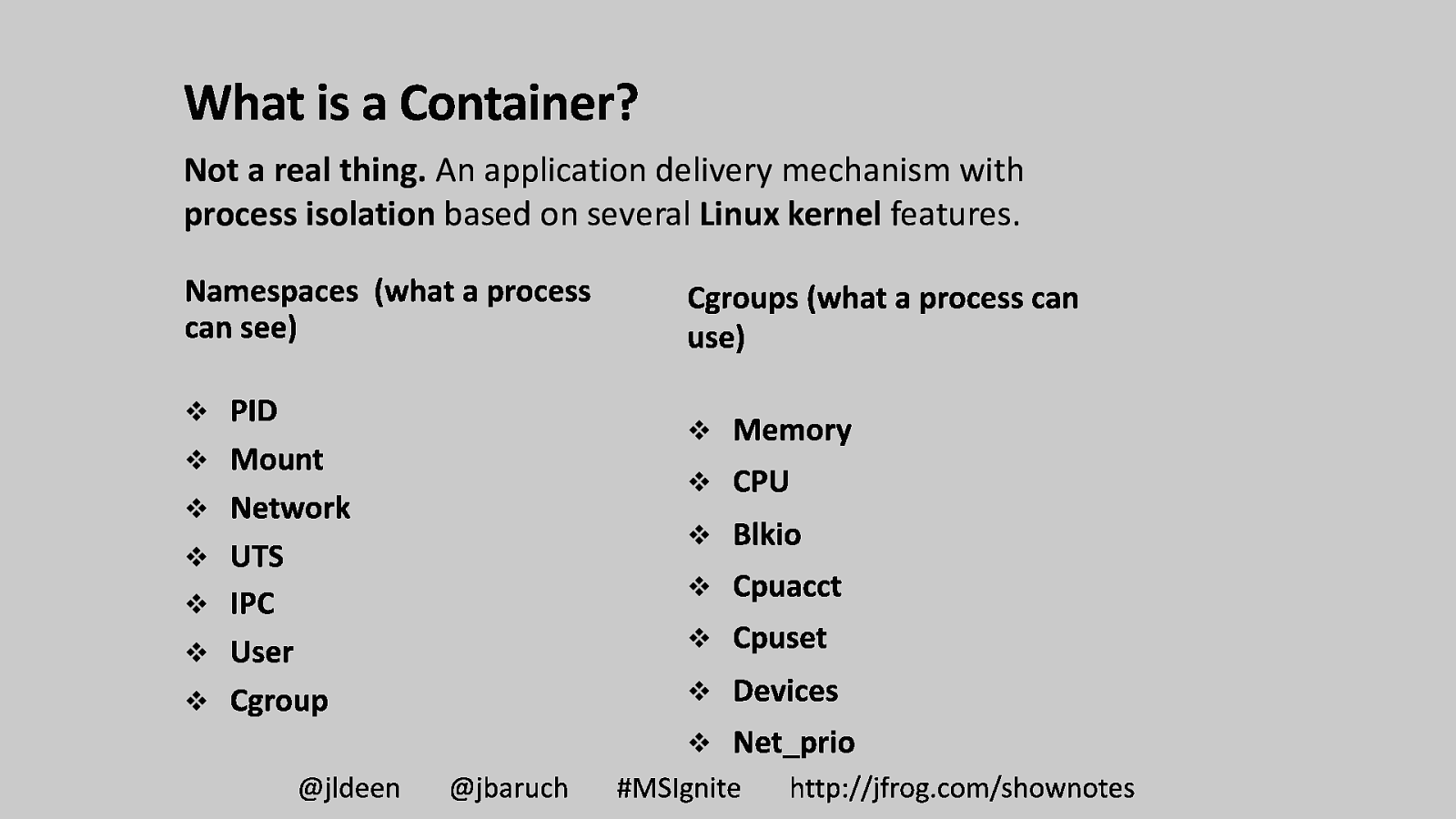
Not a real thing. An application delivery mechanism with process isolation based on several Linux kernel features. v v v v v v v v v v v v v v
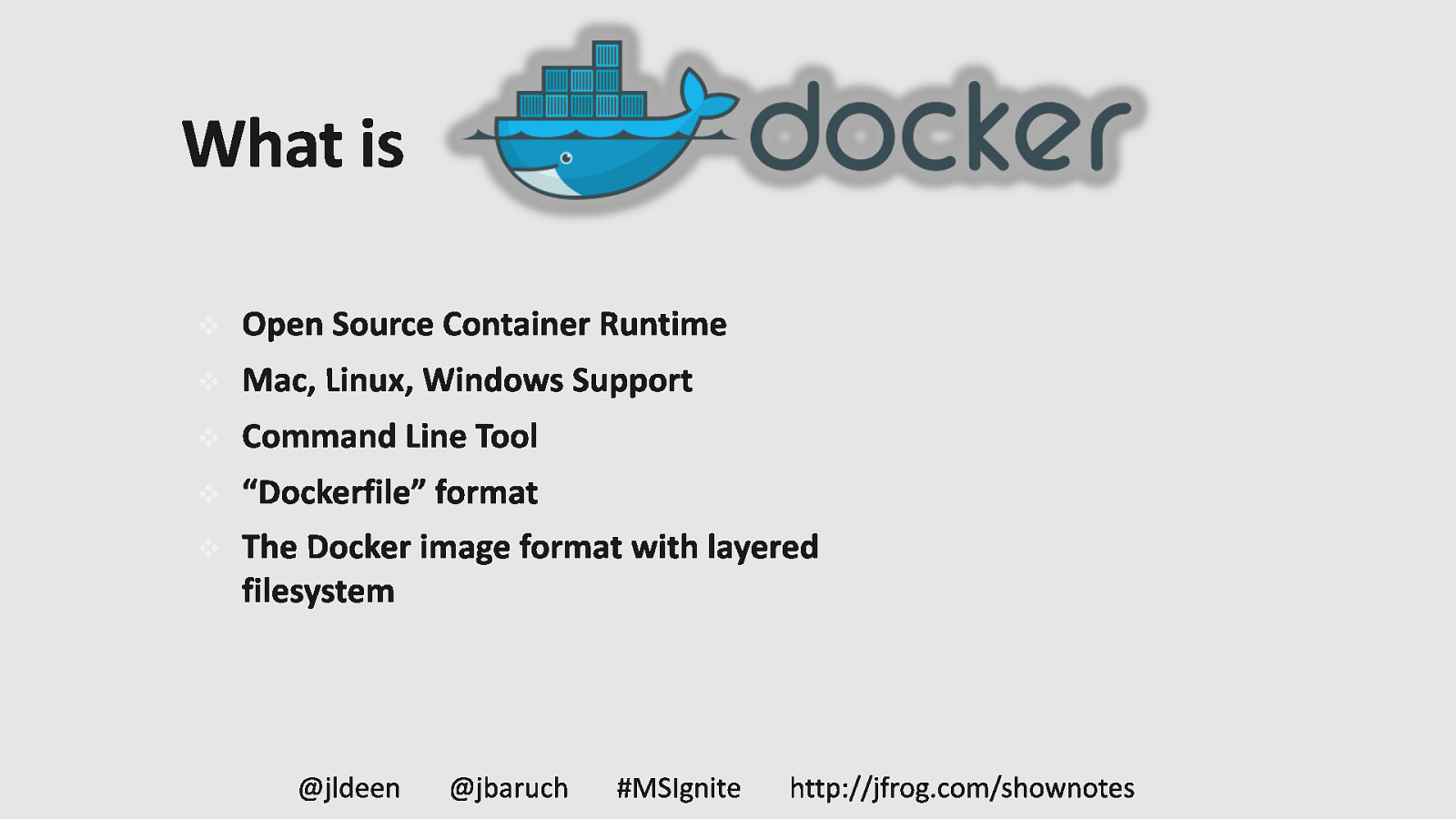
v v v v v
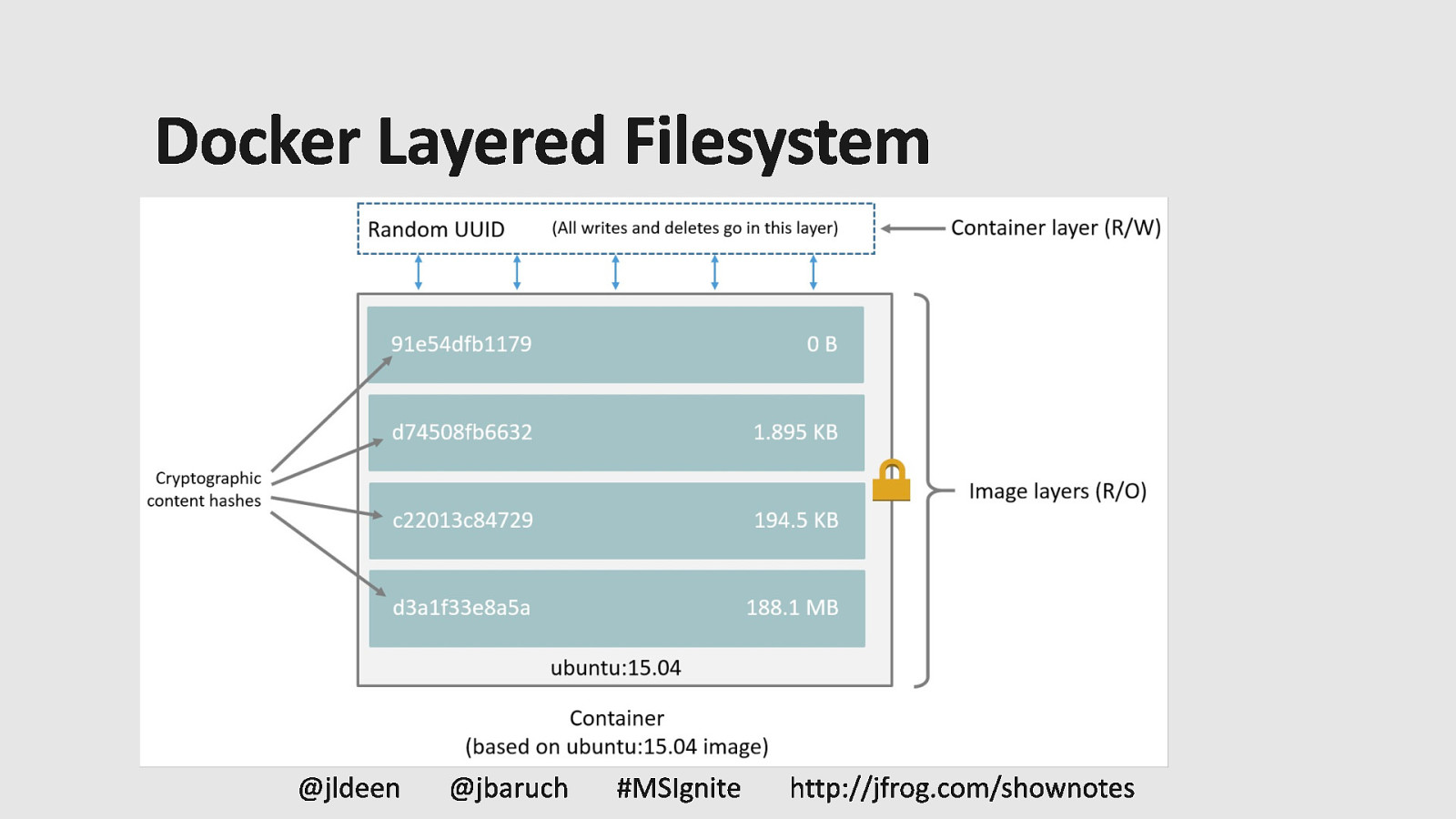
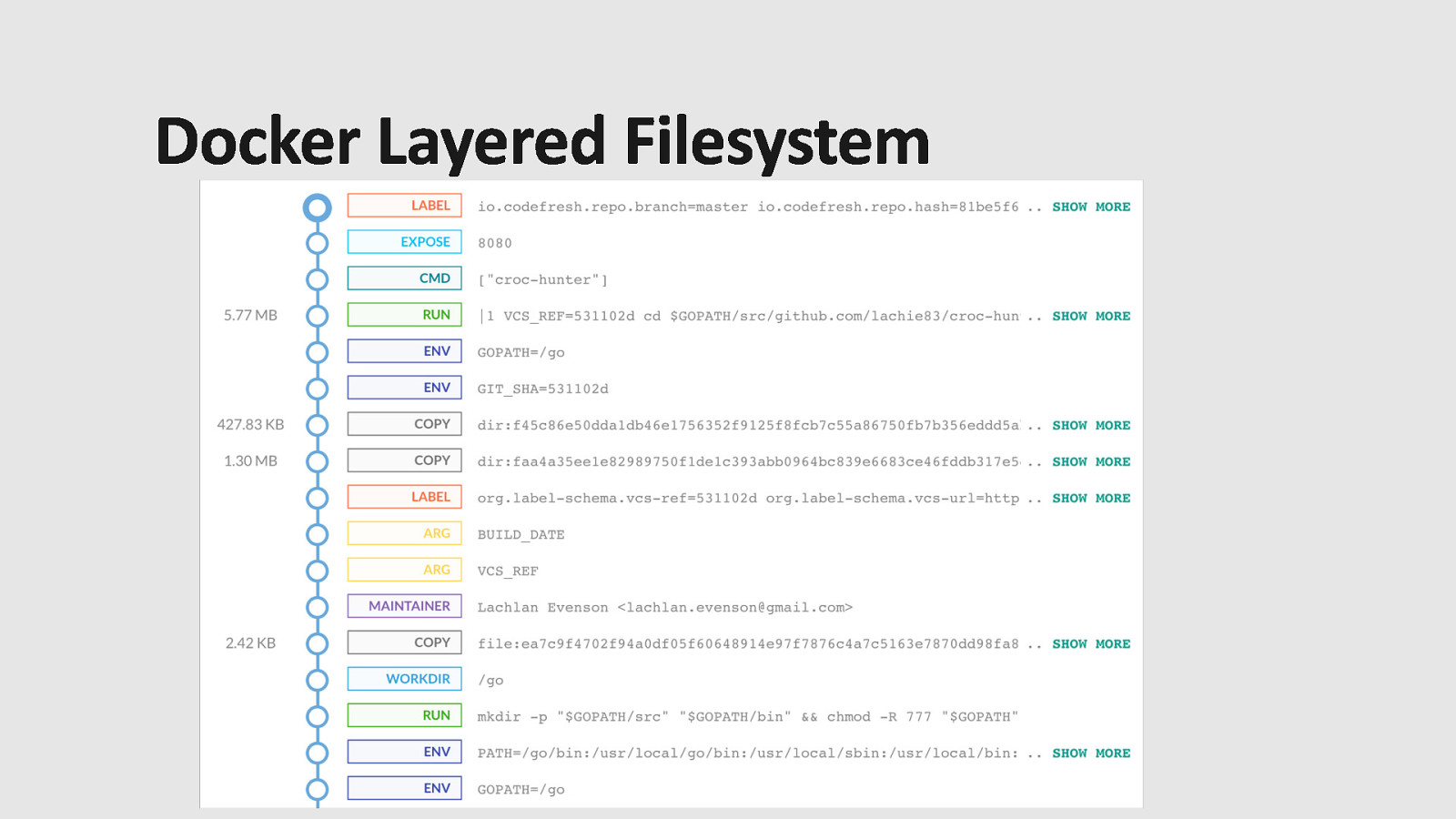
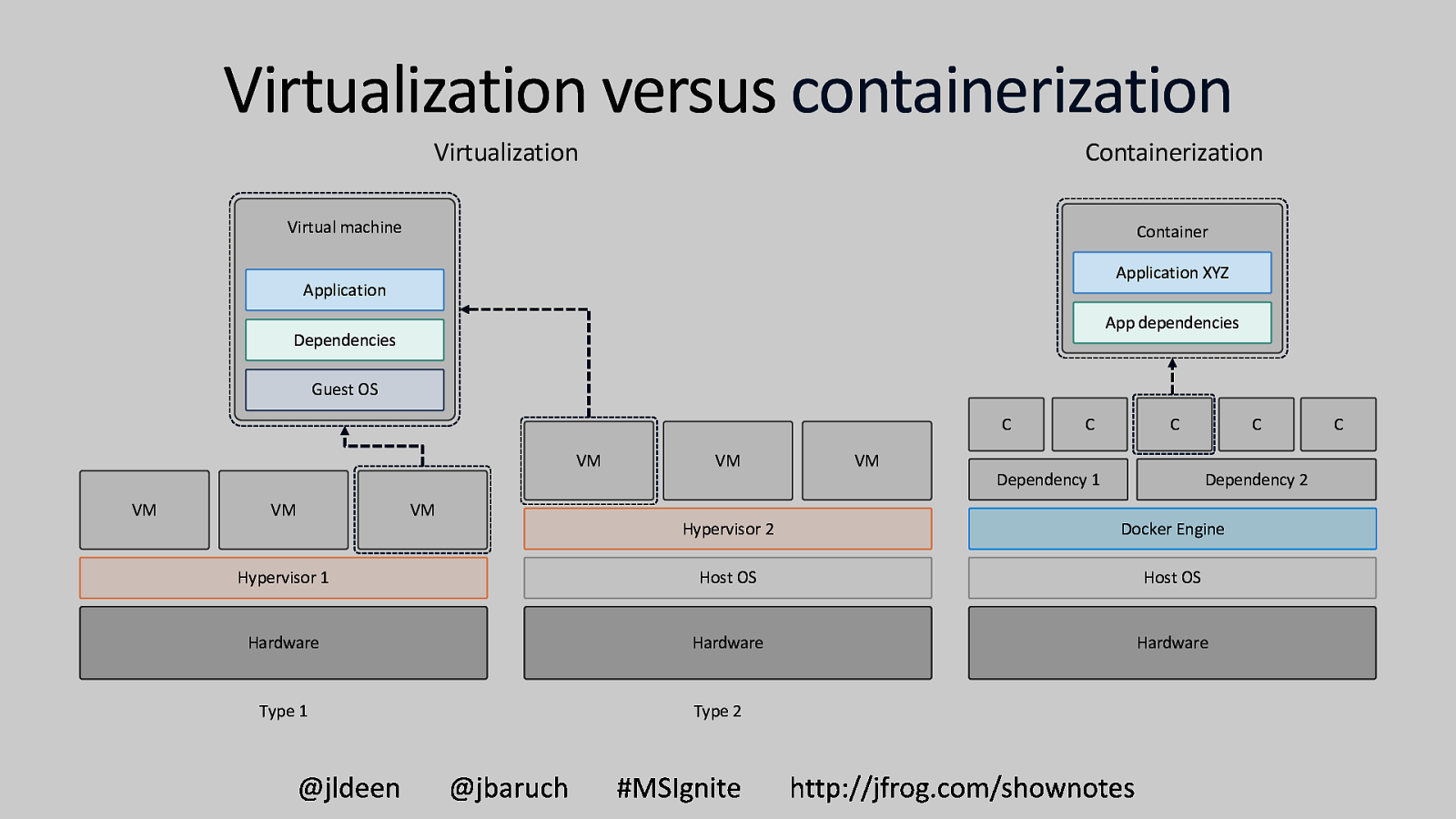
Virtualization versus containerization Virtualization Containerization Virtual machine Container Application XYZ Application App dependencies Dependencies Guest OS C VM VM VM VM VM VM C C Dependency 1 C Dependency 2 Hypervisor 2 Docker Engine Hypervisor 1 Host OS Host OS Hardware Hardware Hardware Type 1 Type 2 C
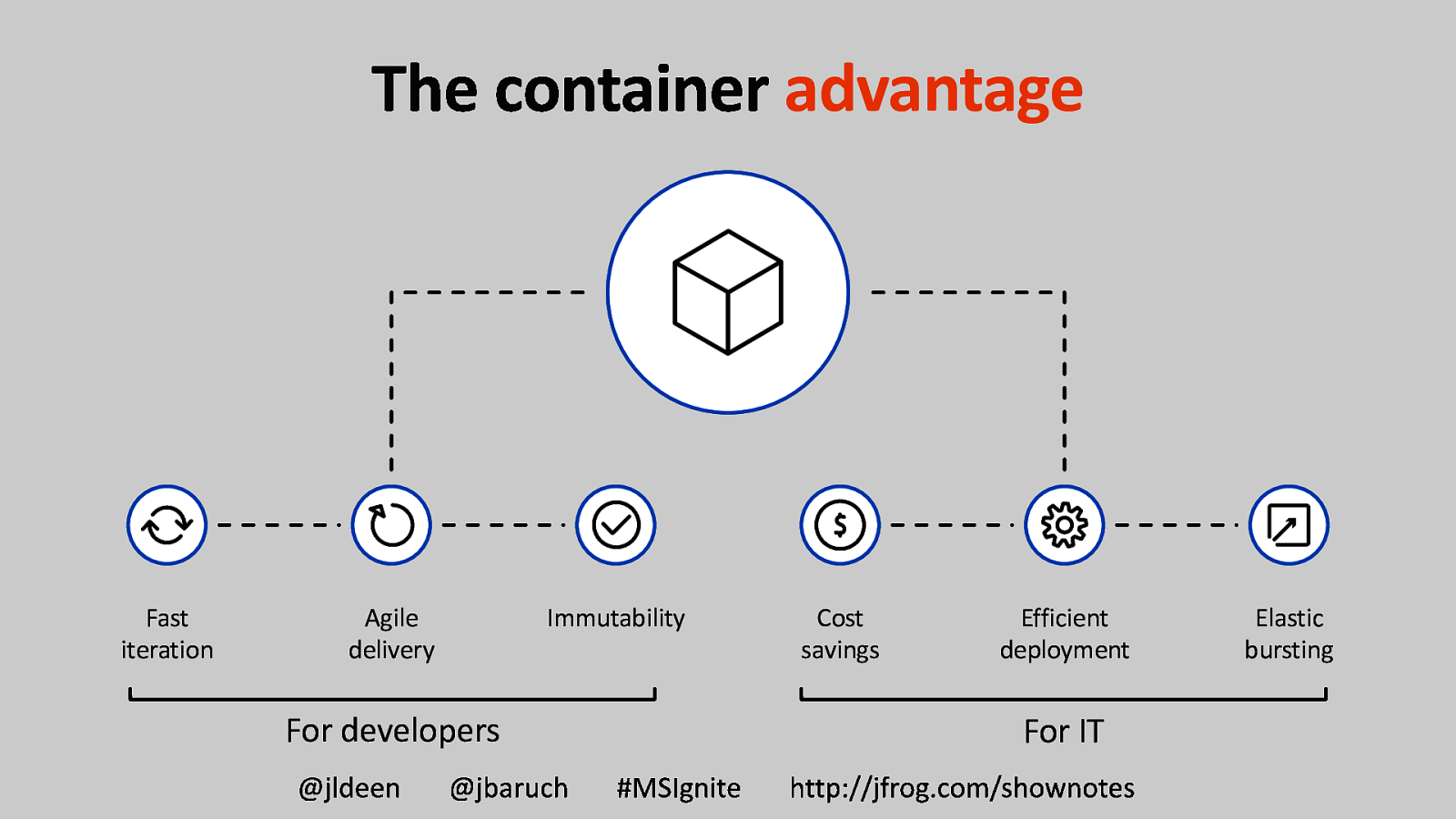
advantage Fast iteration Agile delivery For developers Immutability Cost savings Efficient deployment For IT Elastic bursting


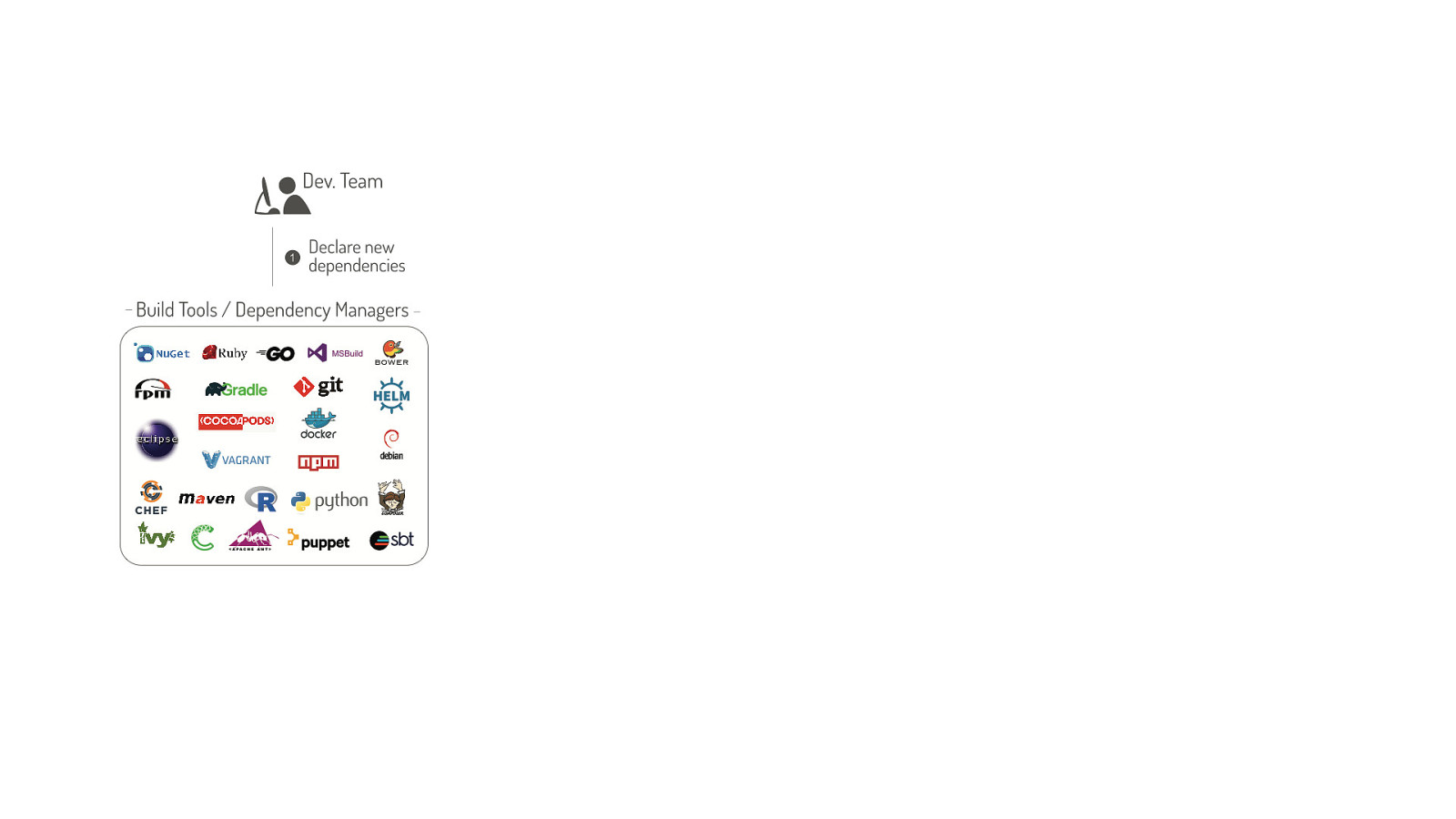
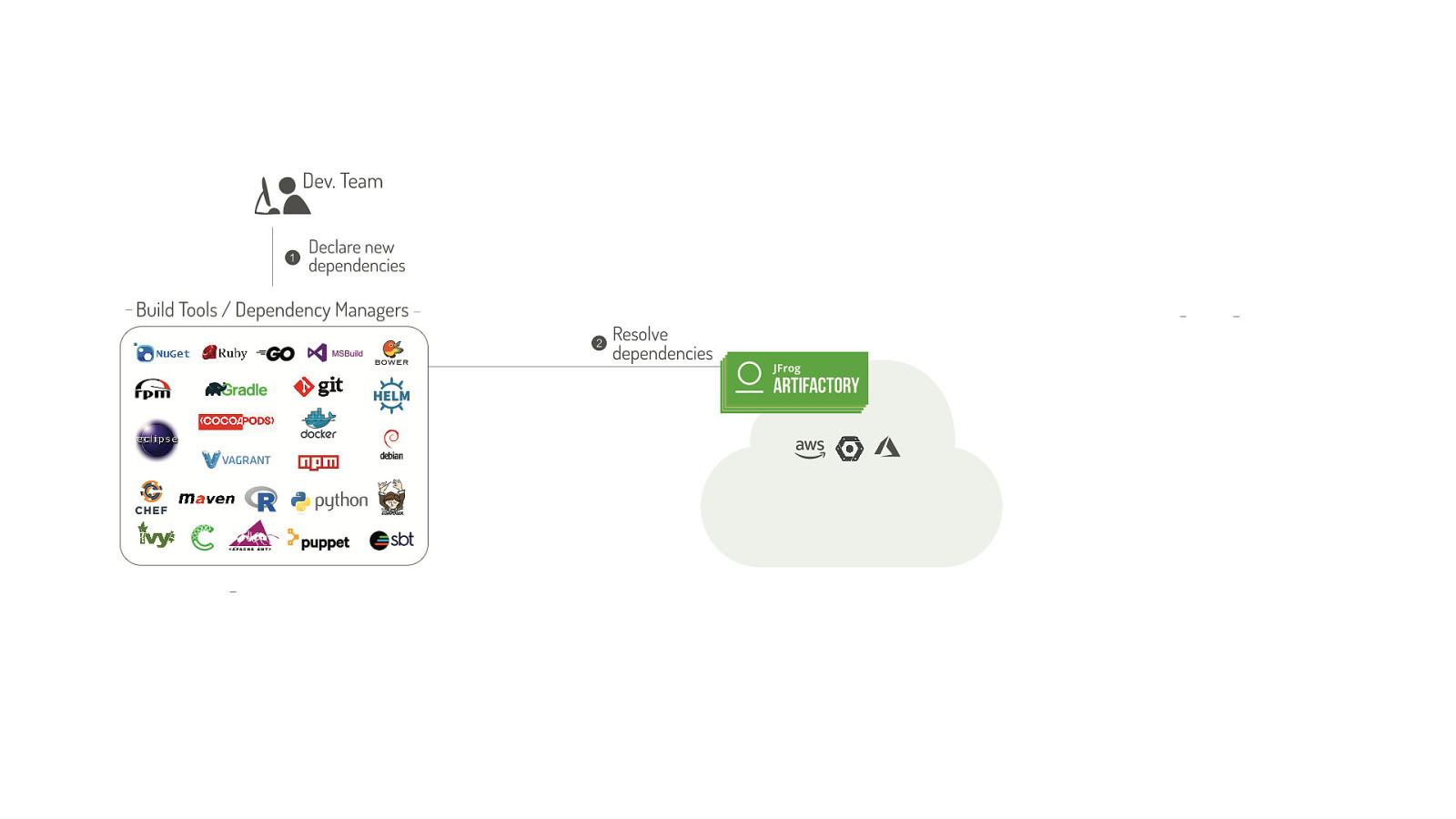
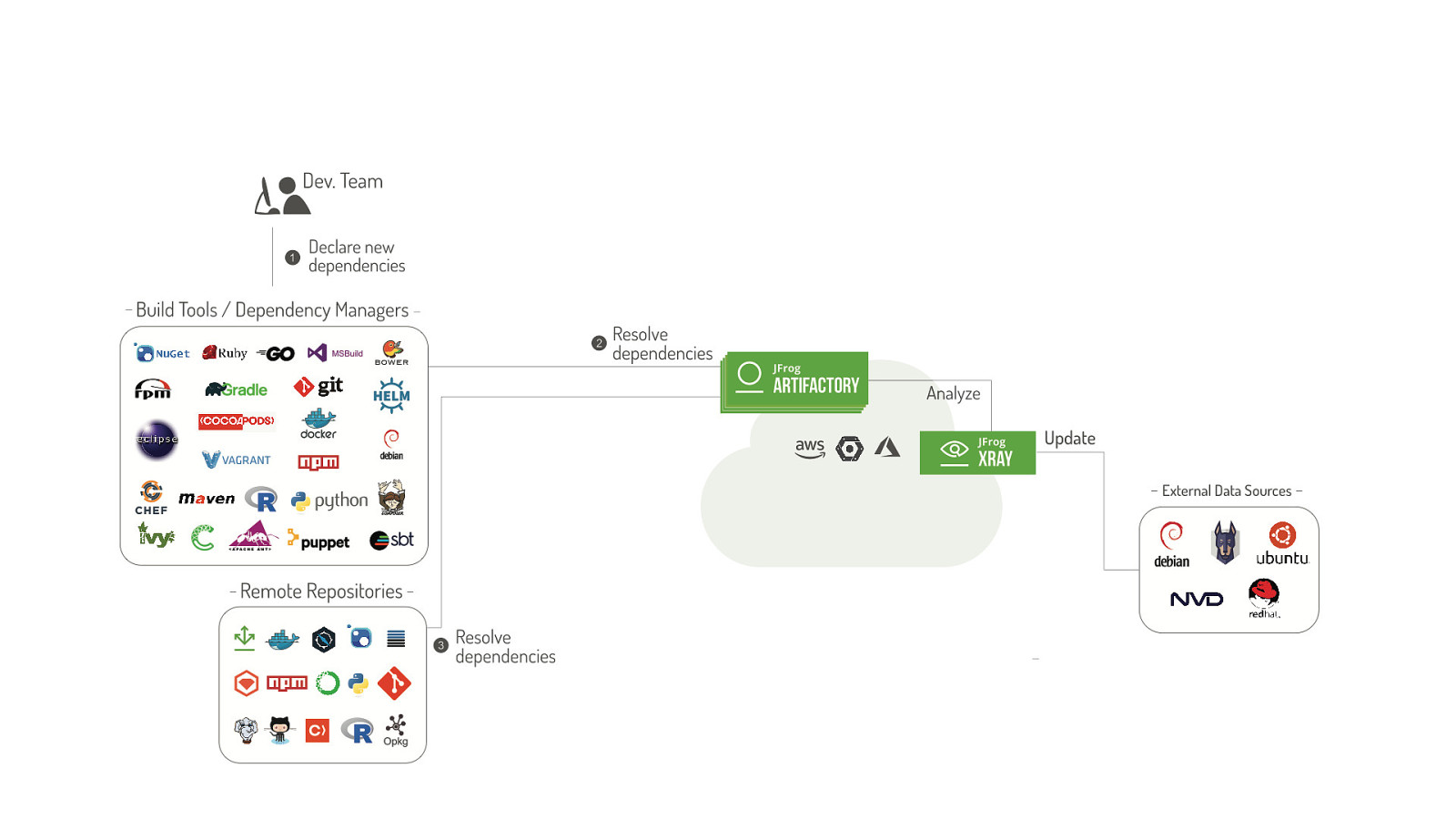
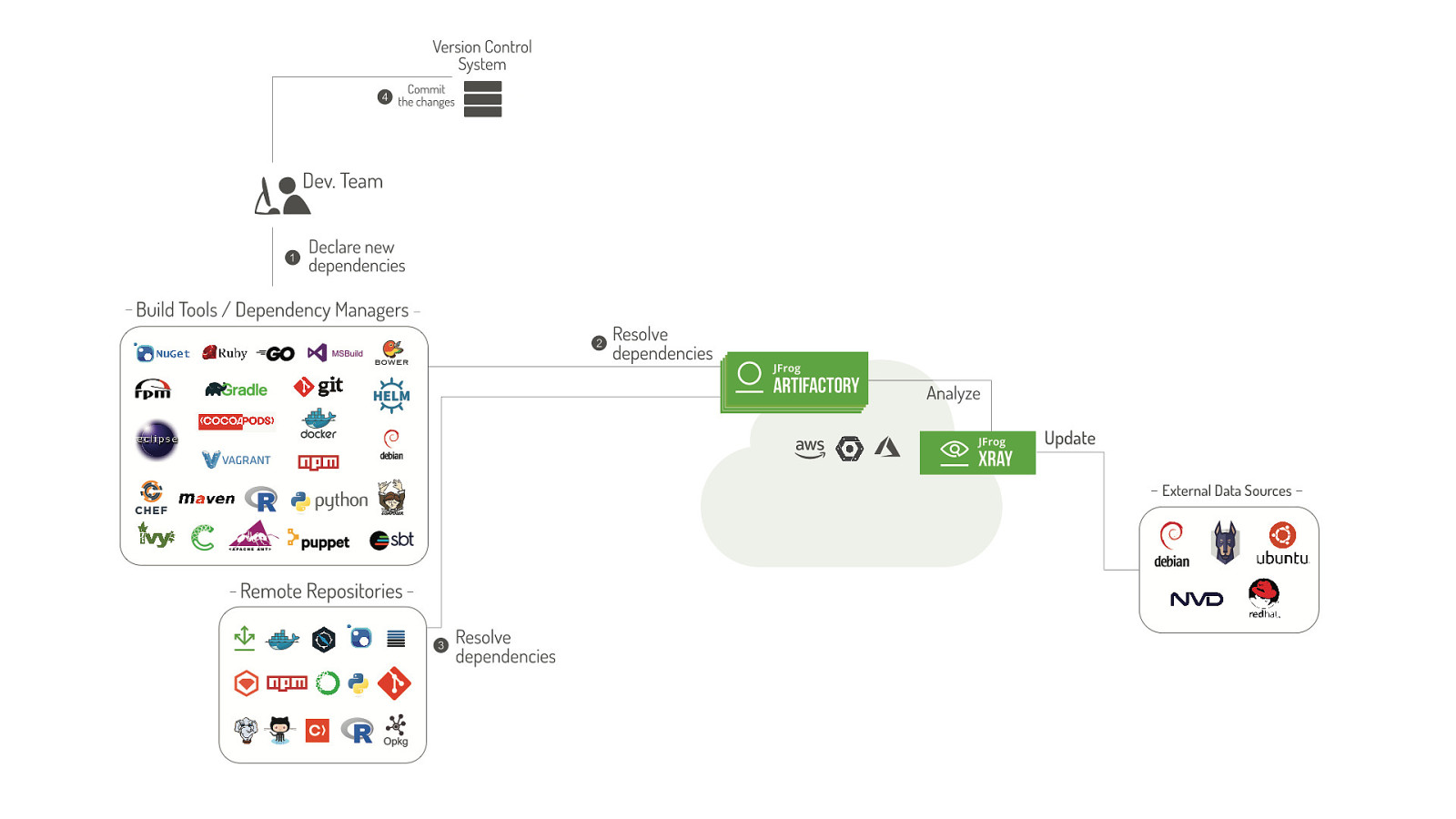
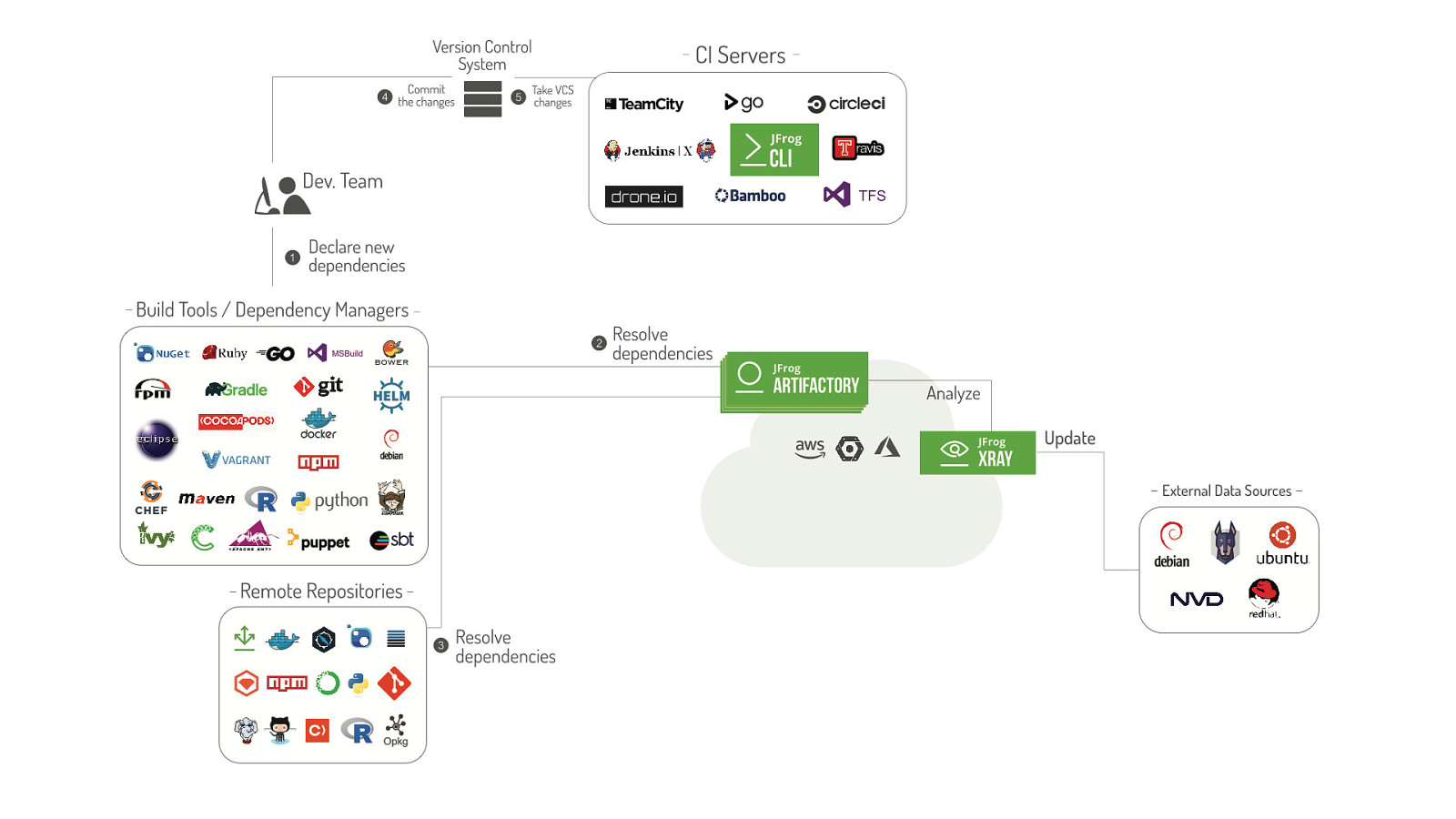
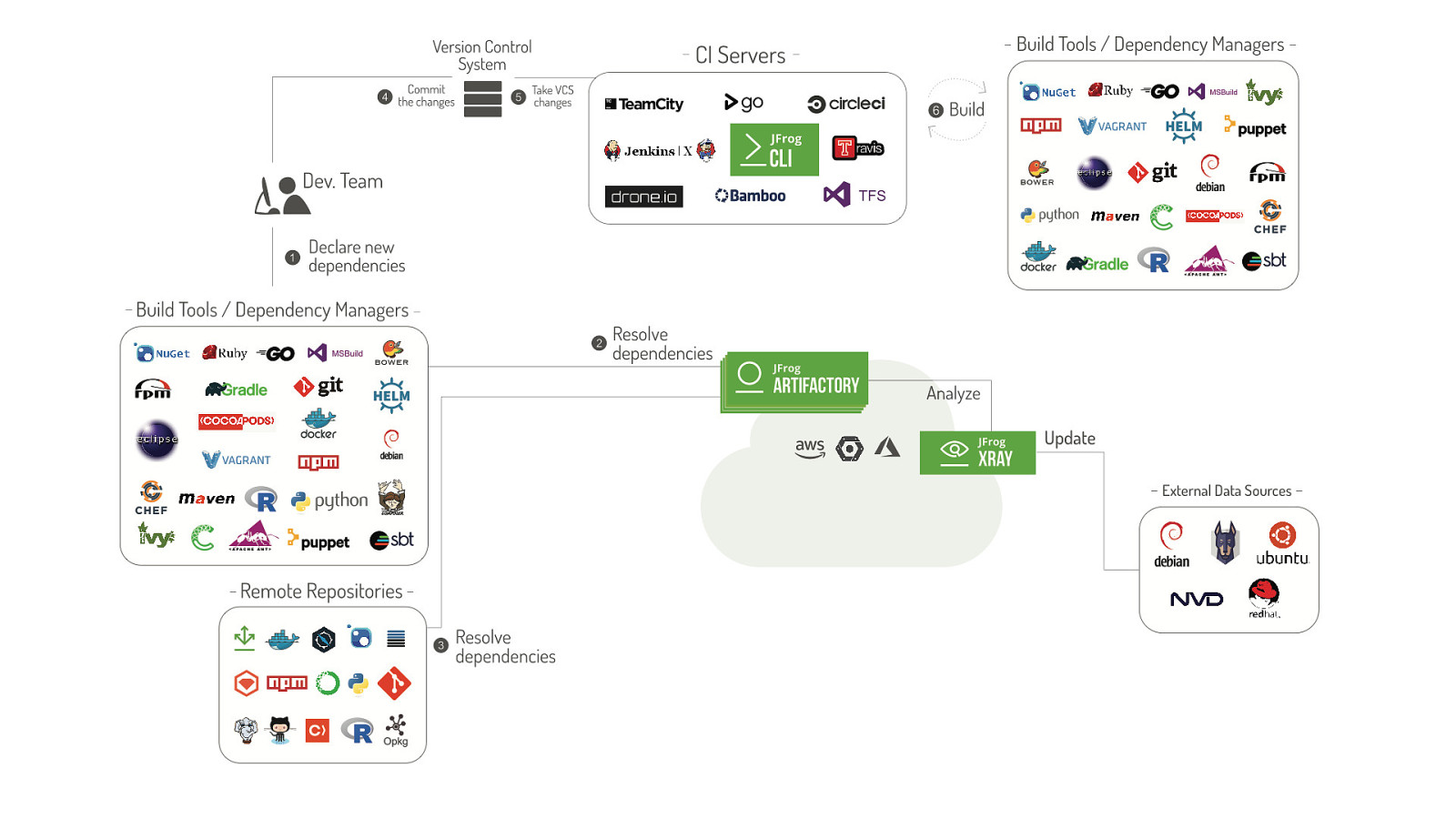
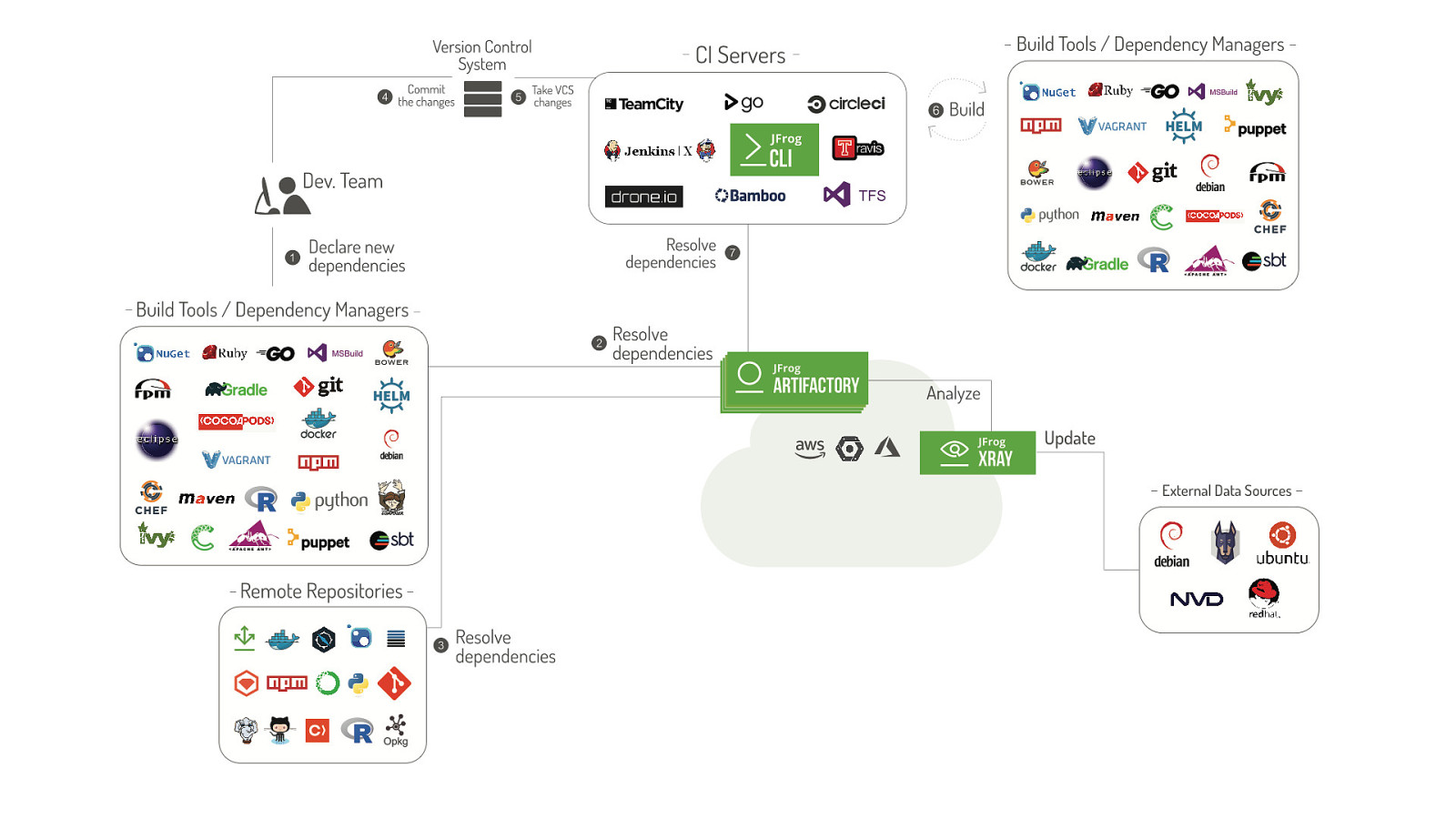
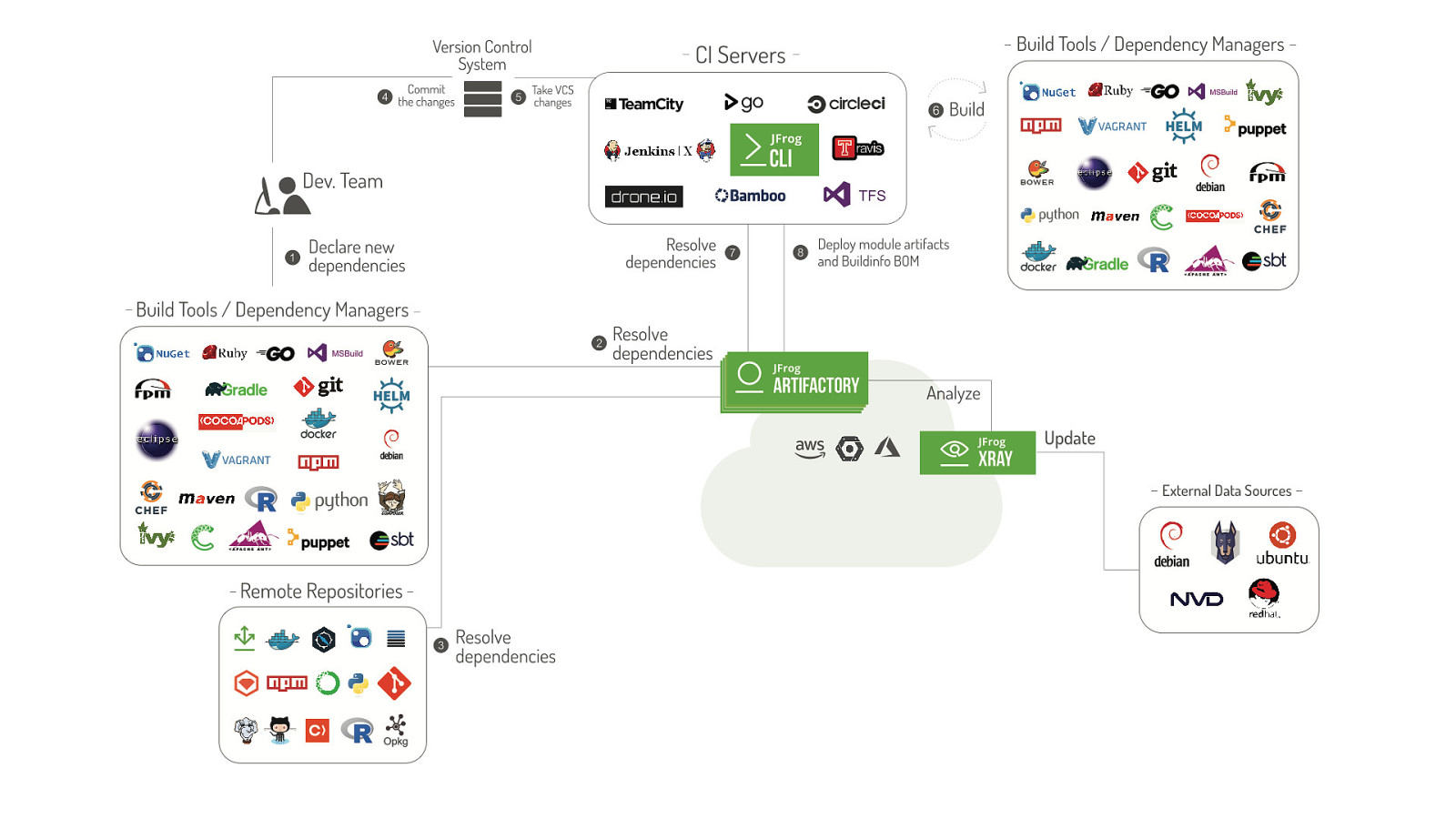
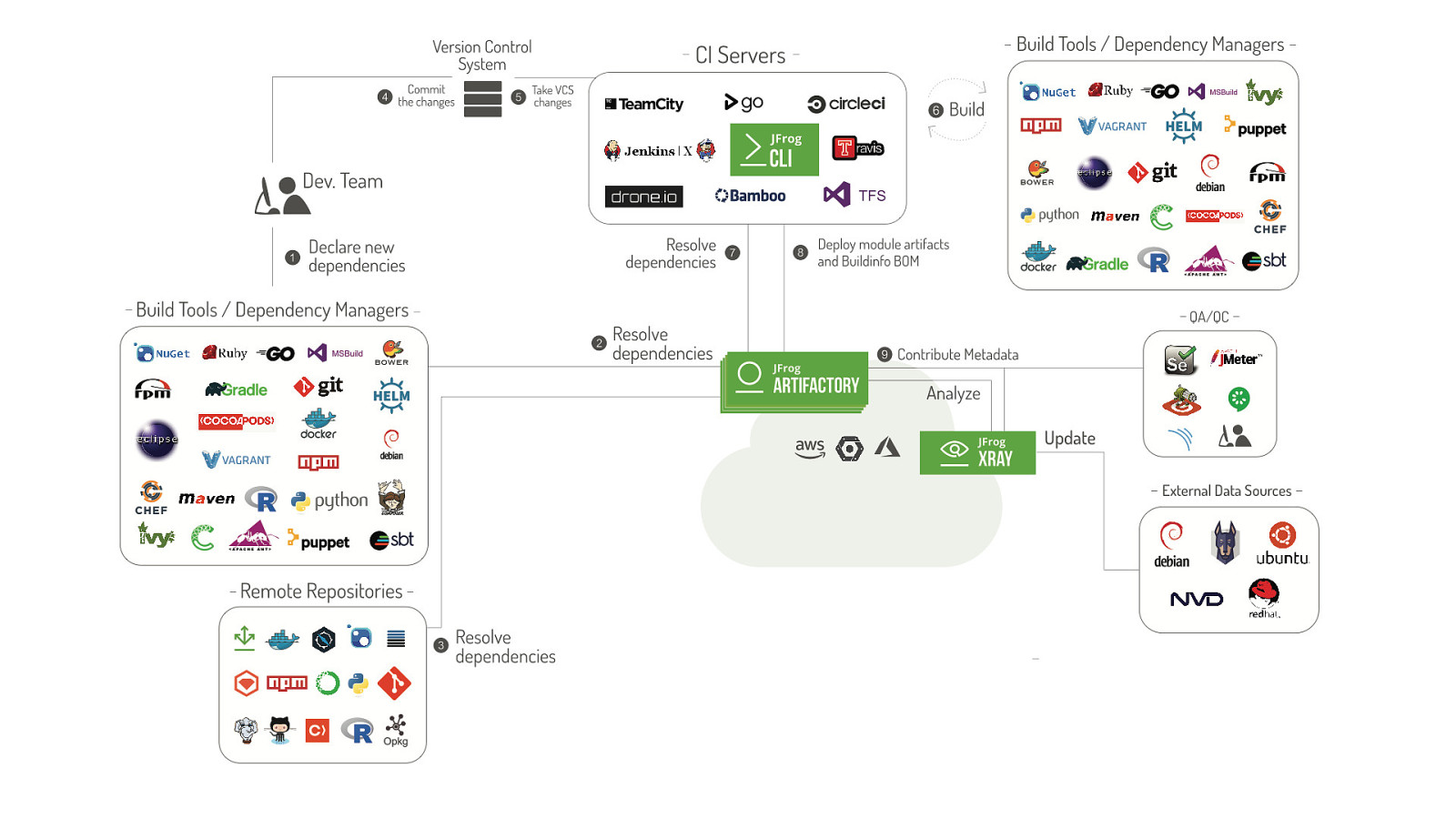
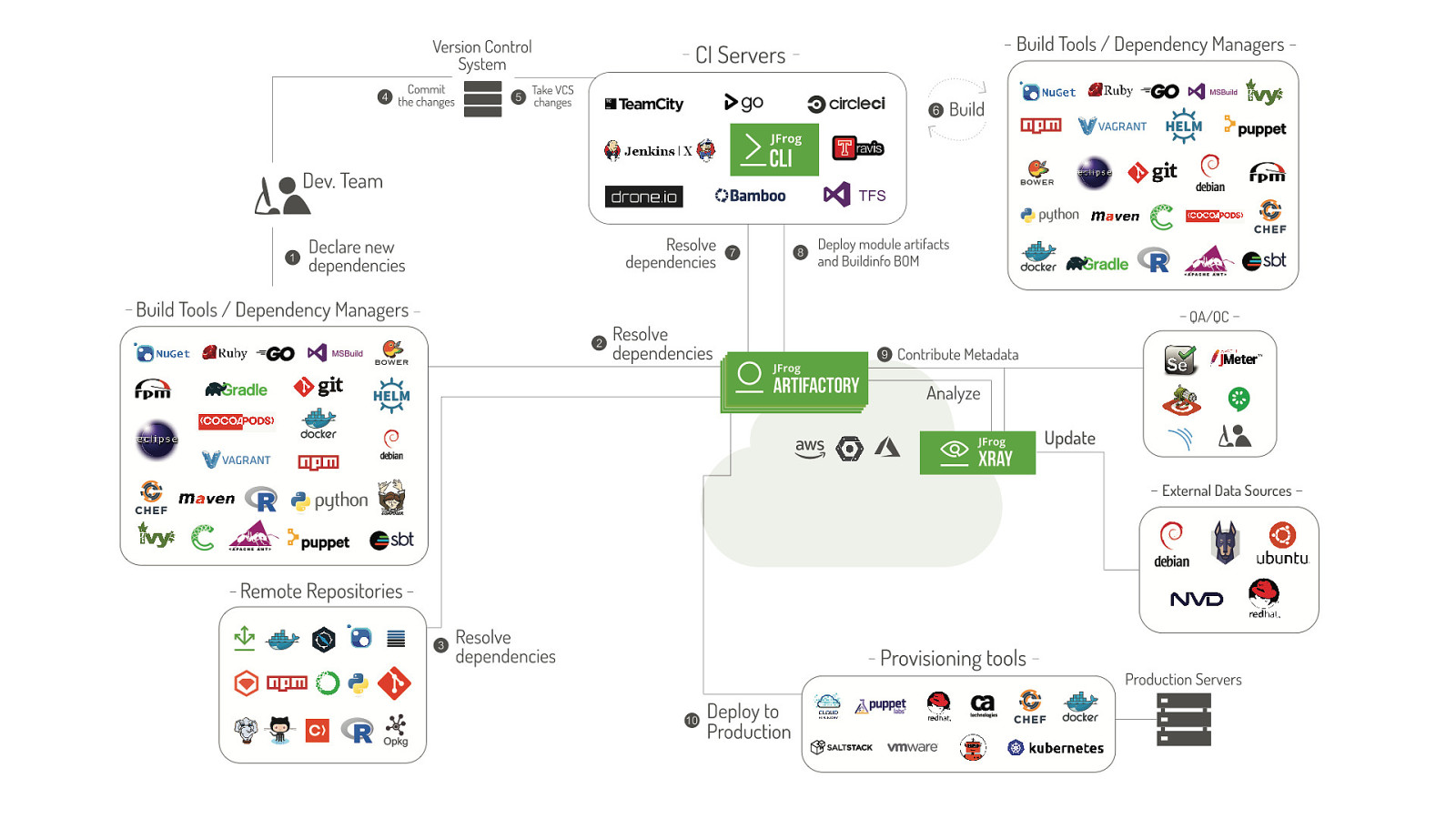
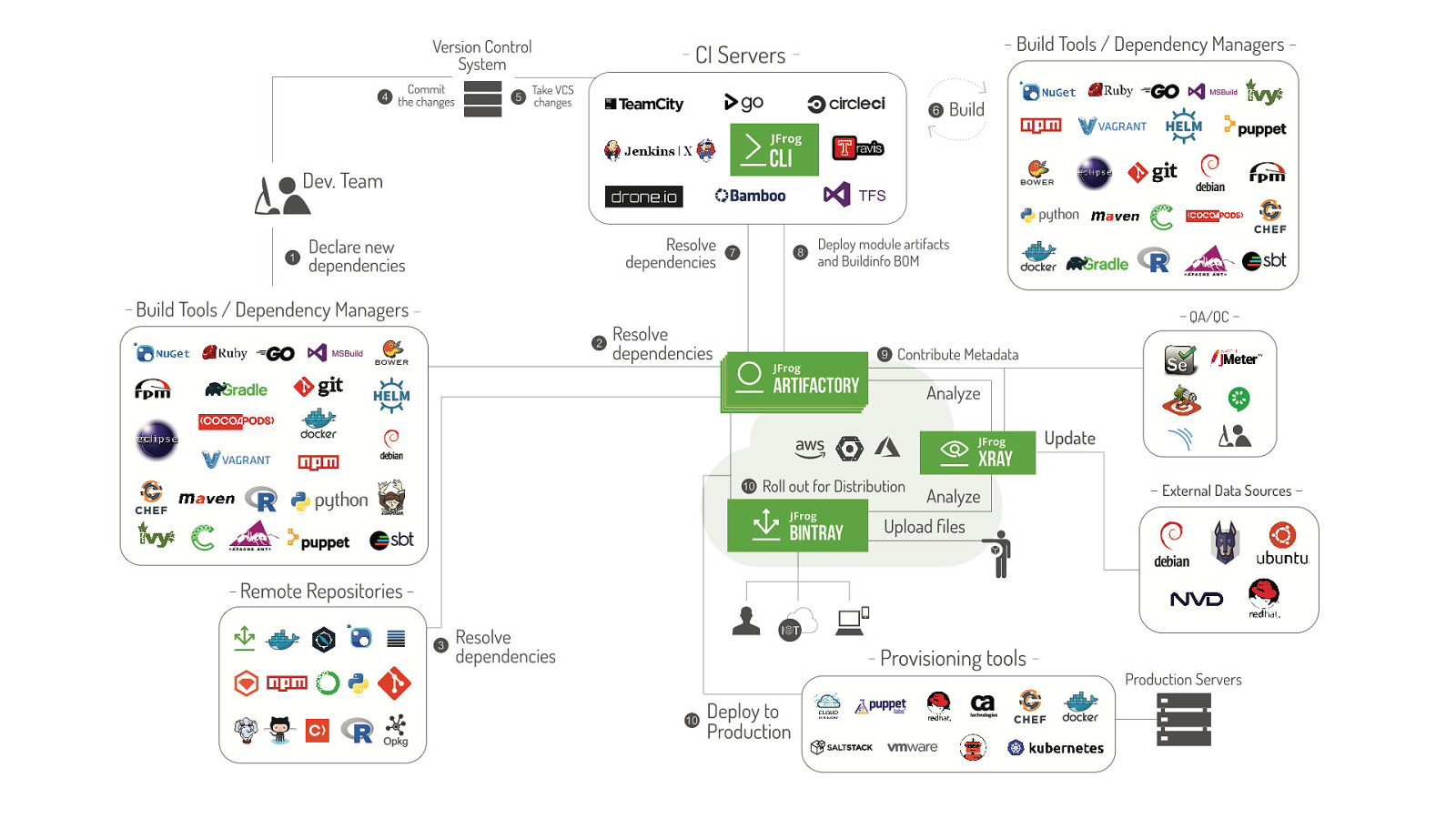
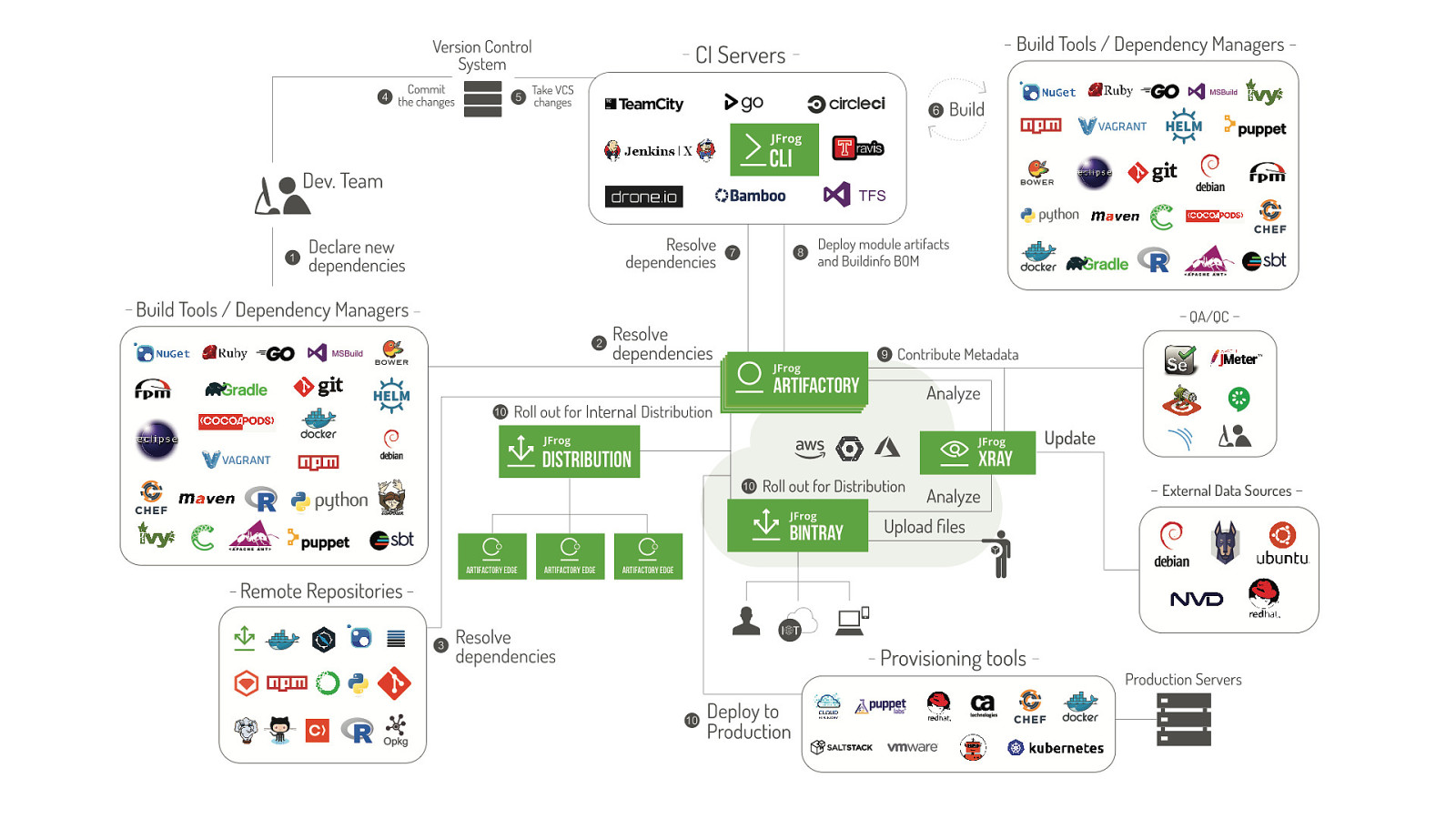
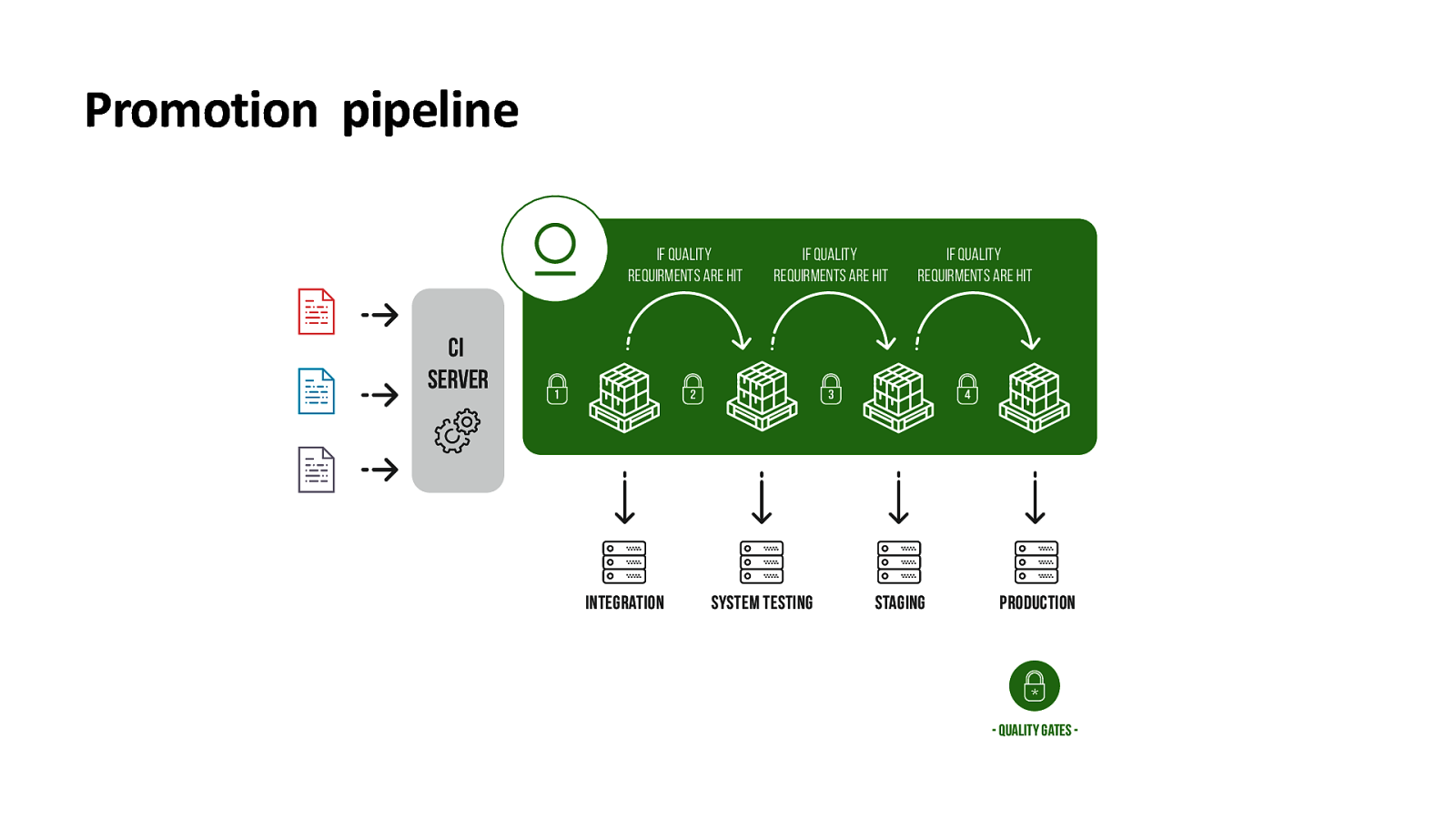
Promotion pipeline If quality requirments are hit CI SERVER 1 If quality requirments are hit 2 Integration If quality requirments are hit 3 System Testing 4 Staging Production *
- Quality gates -
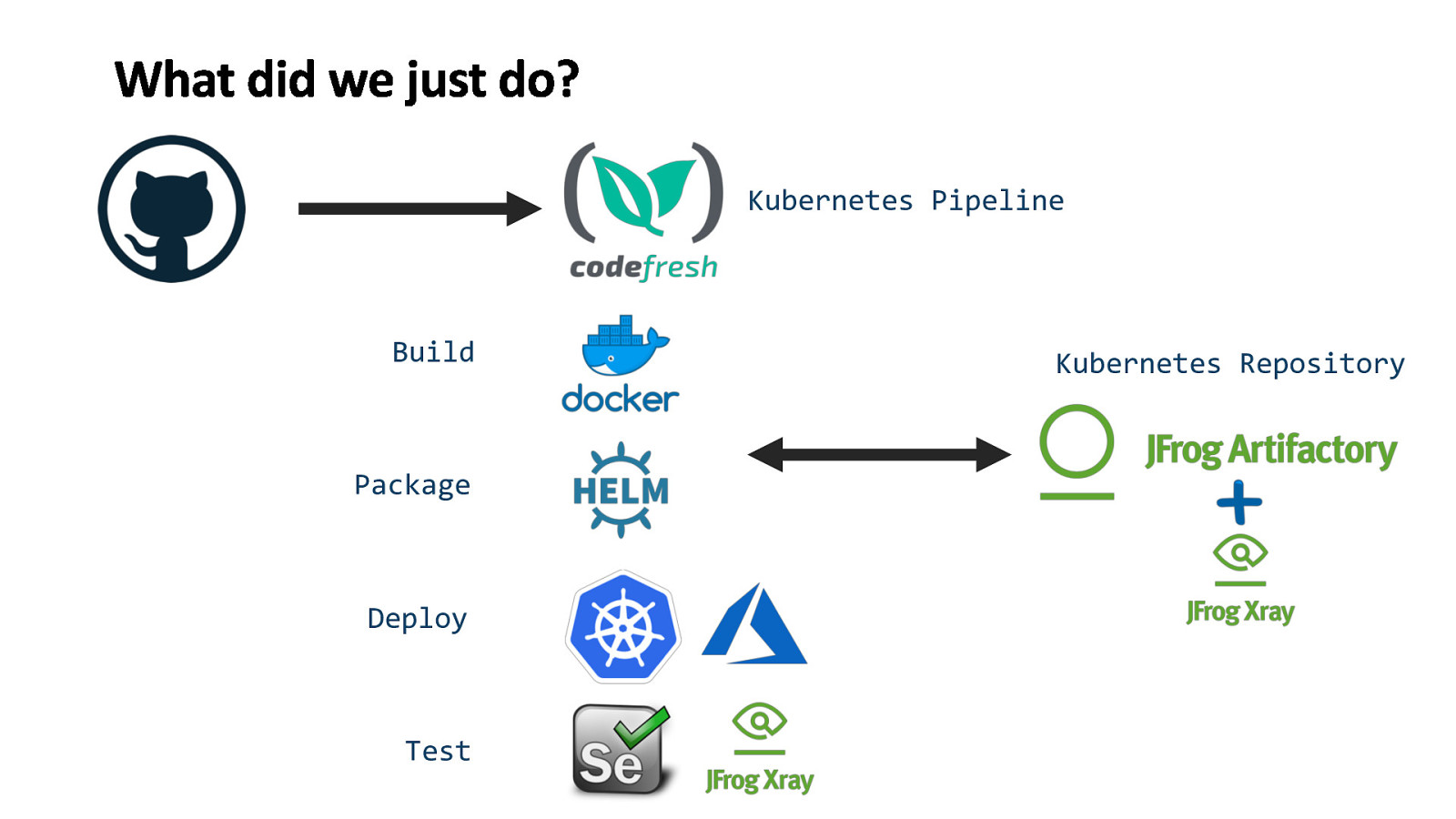
Kubernetes Pipeline Build Package Deploy Test Kubernetes Repository

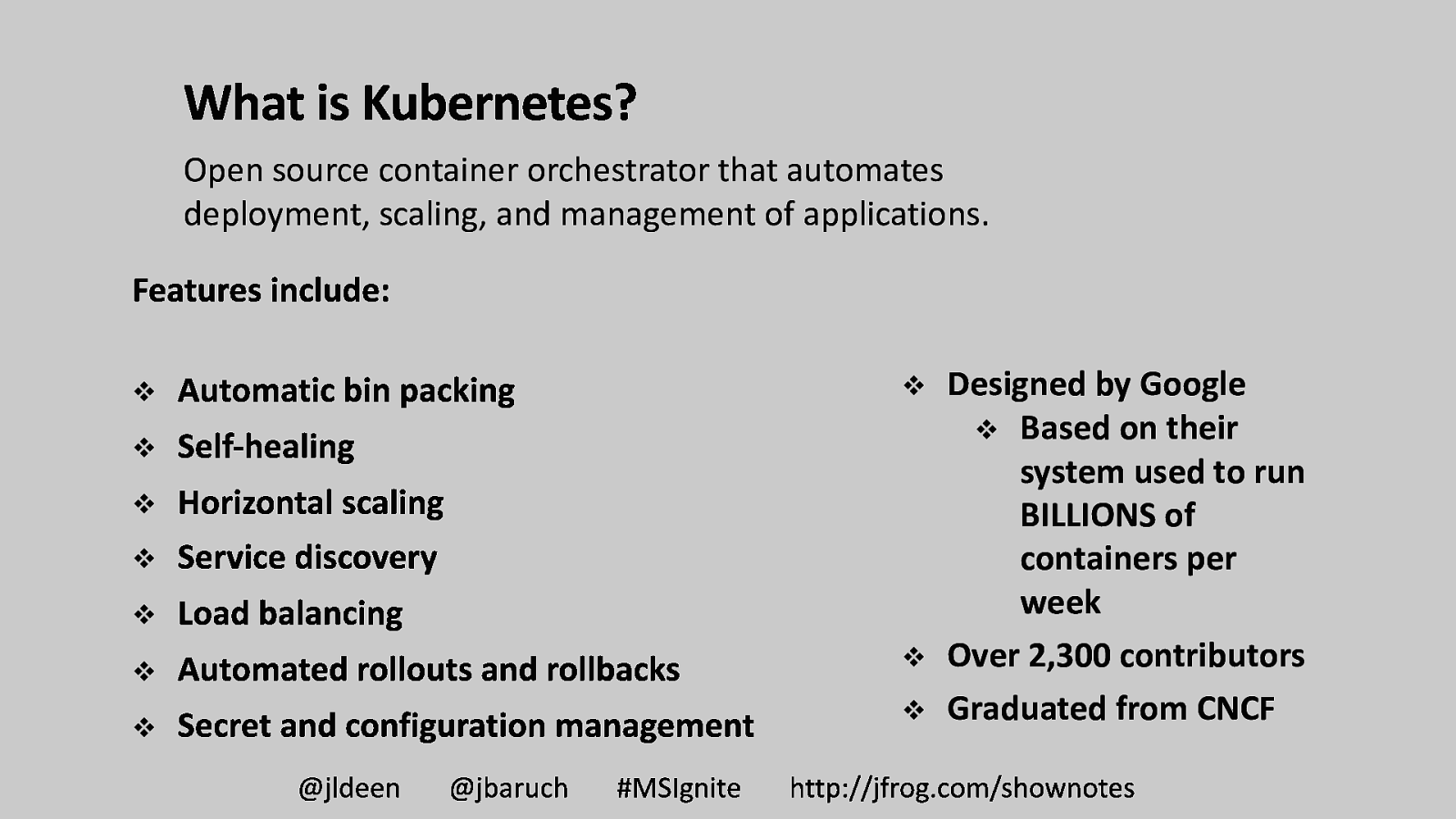
Open source container orchestrator that automates deployment, scaling, and management of applications. v v v v v v v v v v Designed by Google v Based on their system used to run BILLIONS of containers per week Over 2,300 contributors Graduated from CNCF

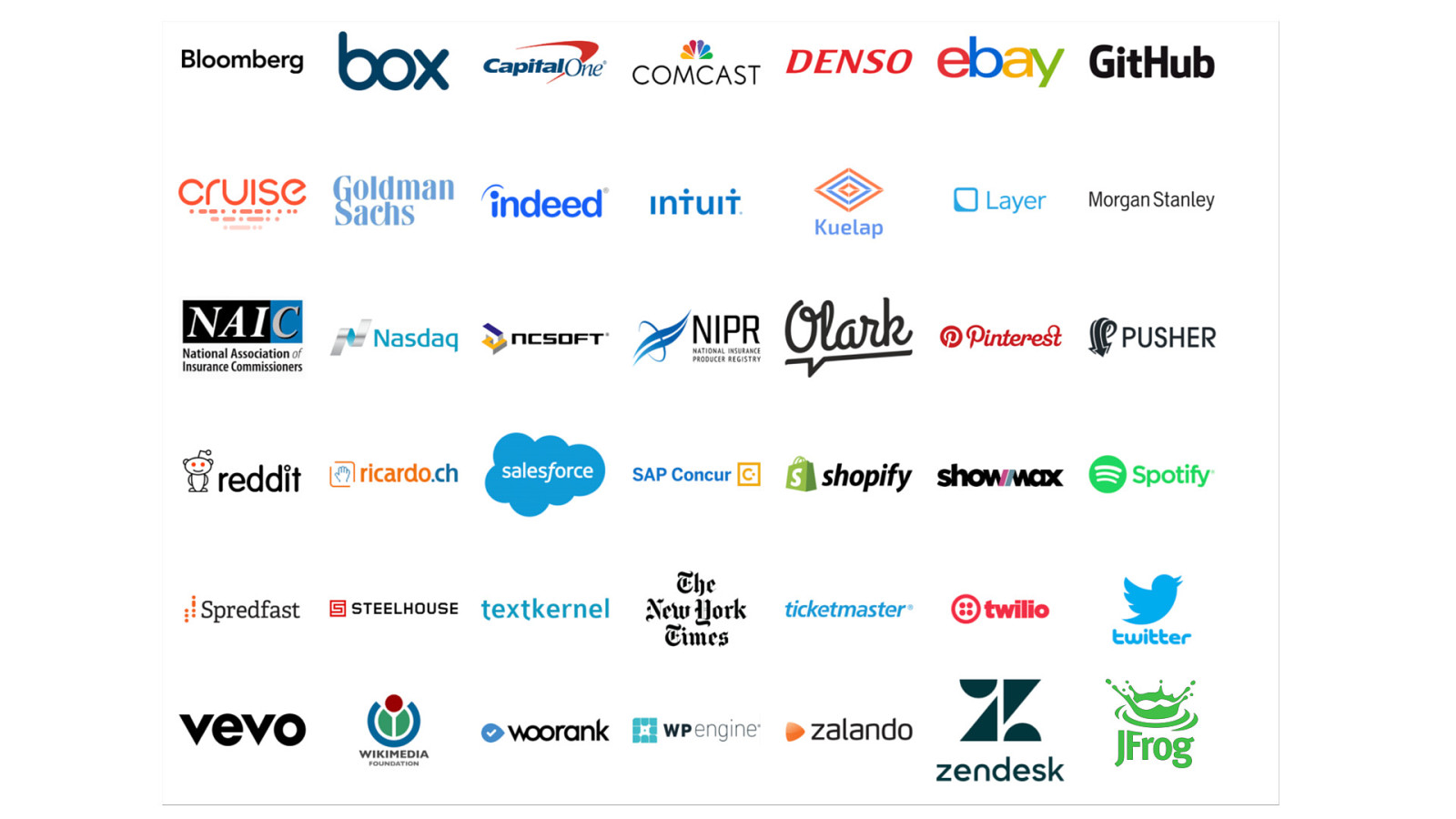
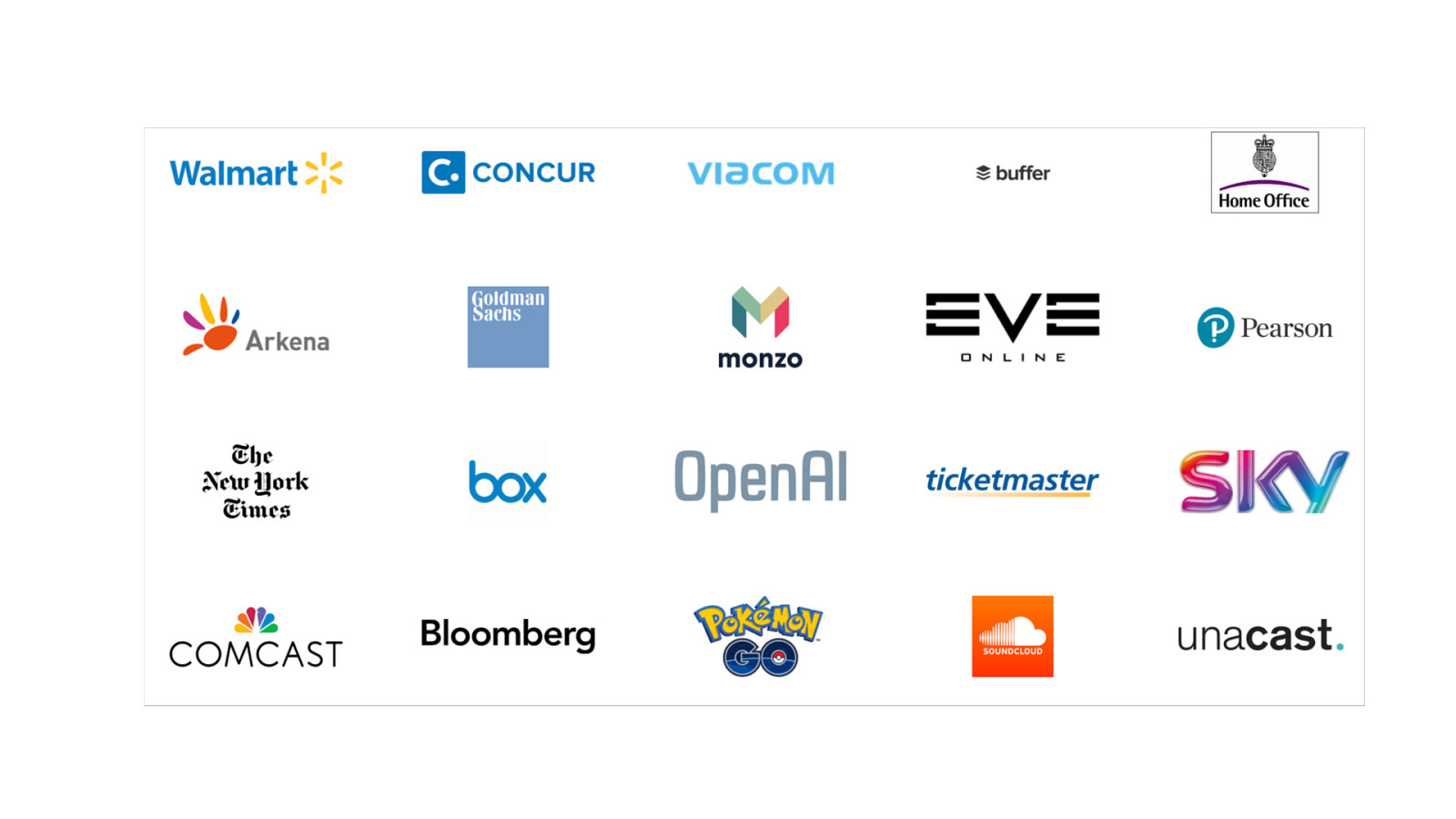


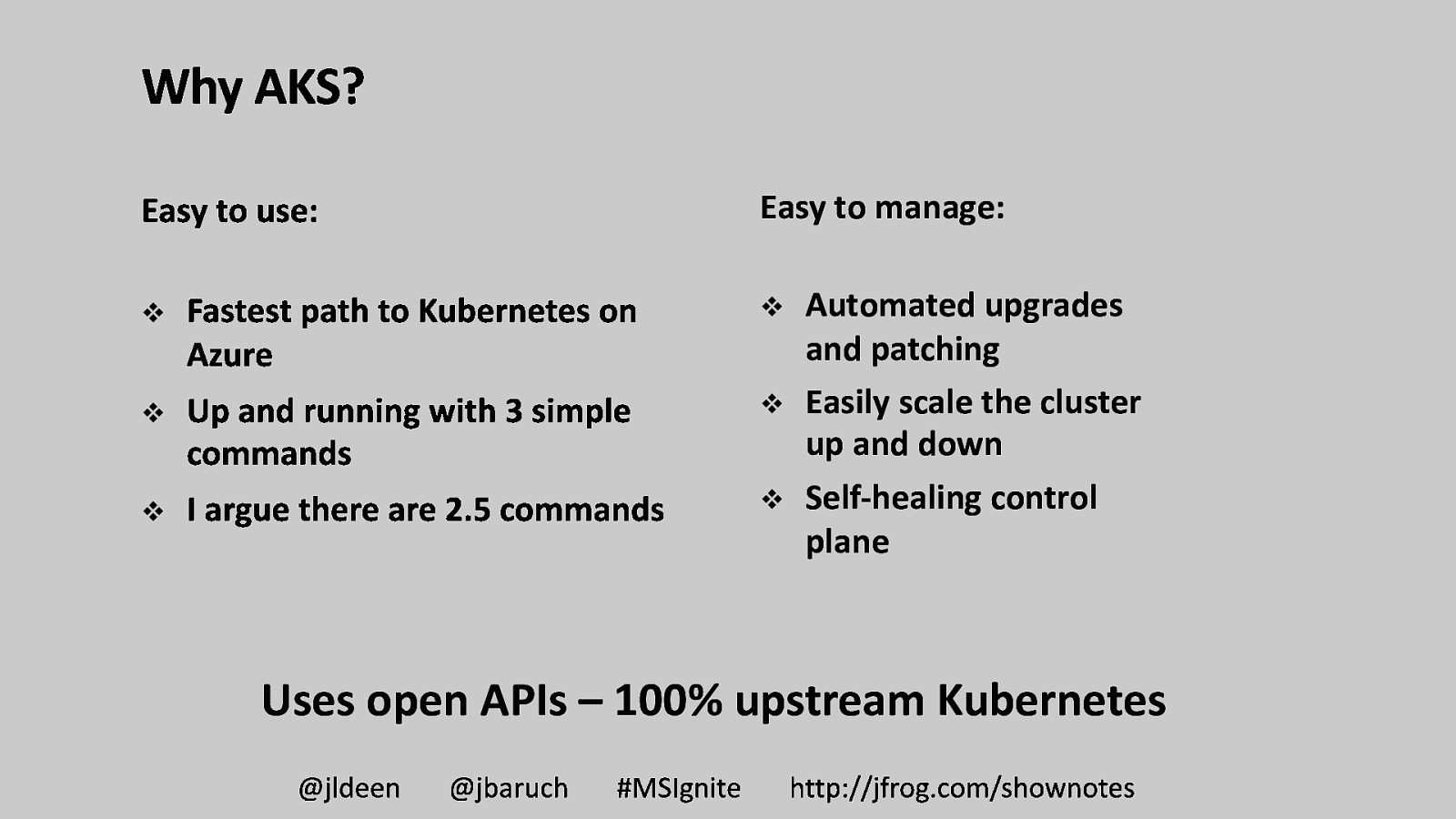
Easy to manage: v v v v v v Automated upgrades and patching Easily scale the cluster up and down Self-healing control plane Uses open APIs – 100% upstream Kubernetes
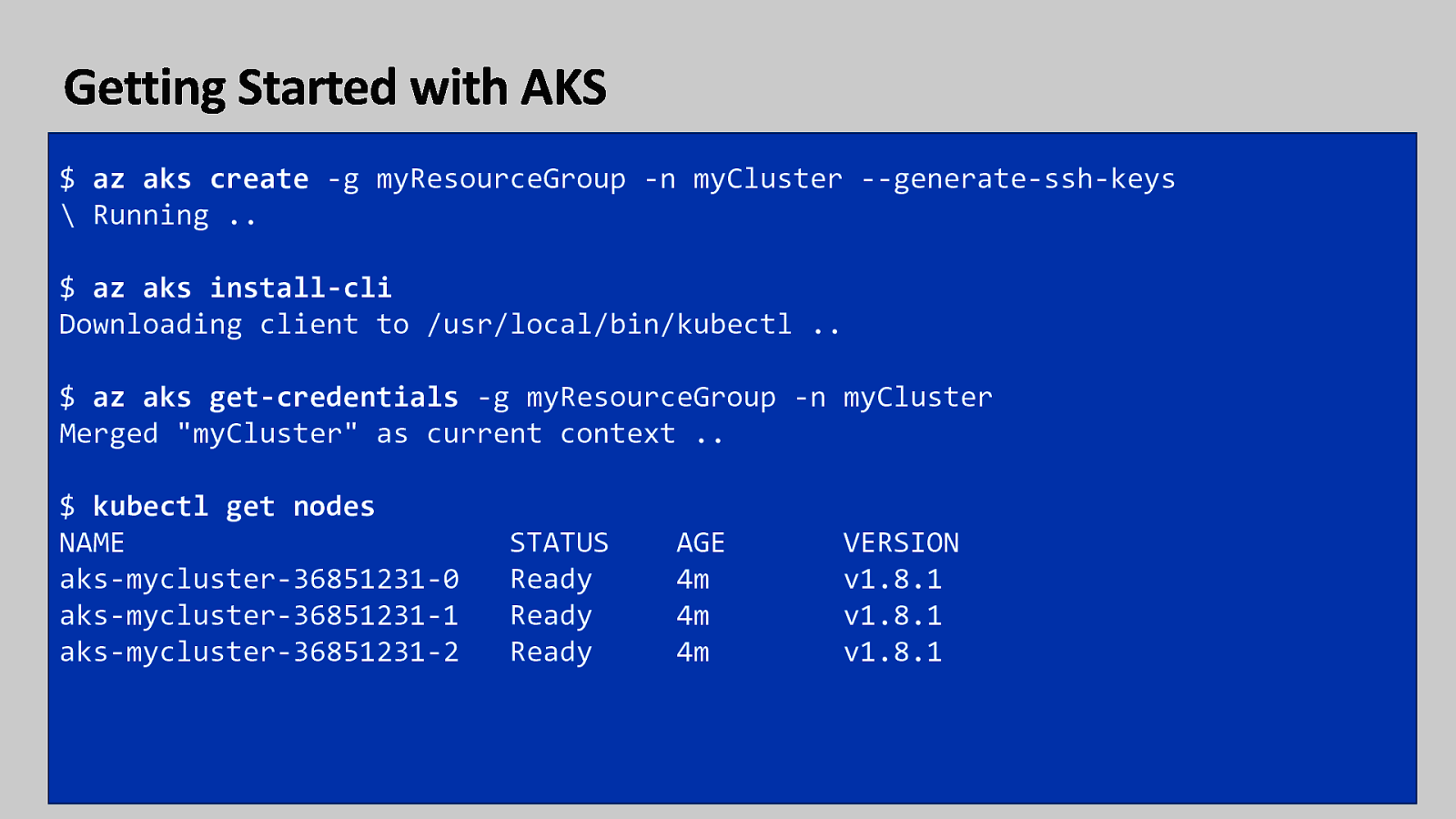
$ az aks create -g myResourceGroup -n myCluster --generate-ssh-keys \ Running .. $ az aks install-cli Downloading client to /usr/local/bin/kubectl .. $ az aks get-credentials -g myResourceGroup -n myCluster Merged "myCluster" as current context .. $ kubectl get nodes NAME aks-mycluster-36851231-0 aks-mycluster-36851231-1 aks-mycluster-36851231-2 STATUS Ready Ready Ready AGE 4m 4m 4m VERSION v1.8.1 v1.8.1 v1.8.1
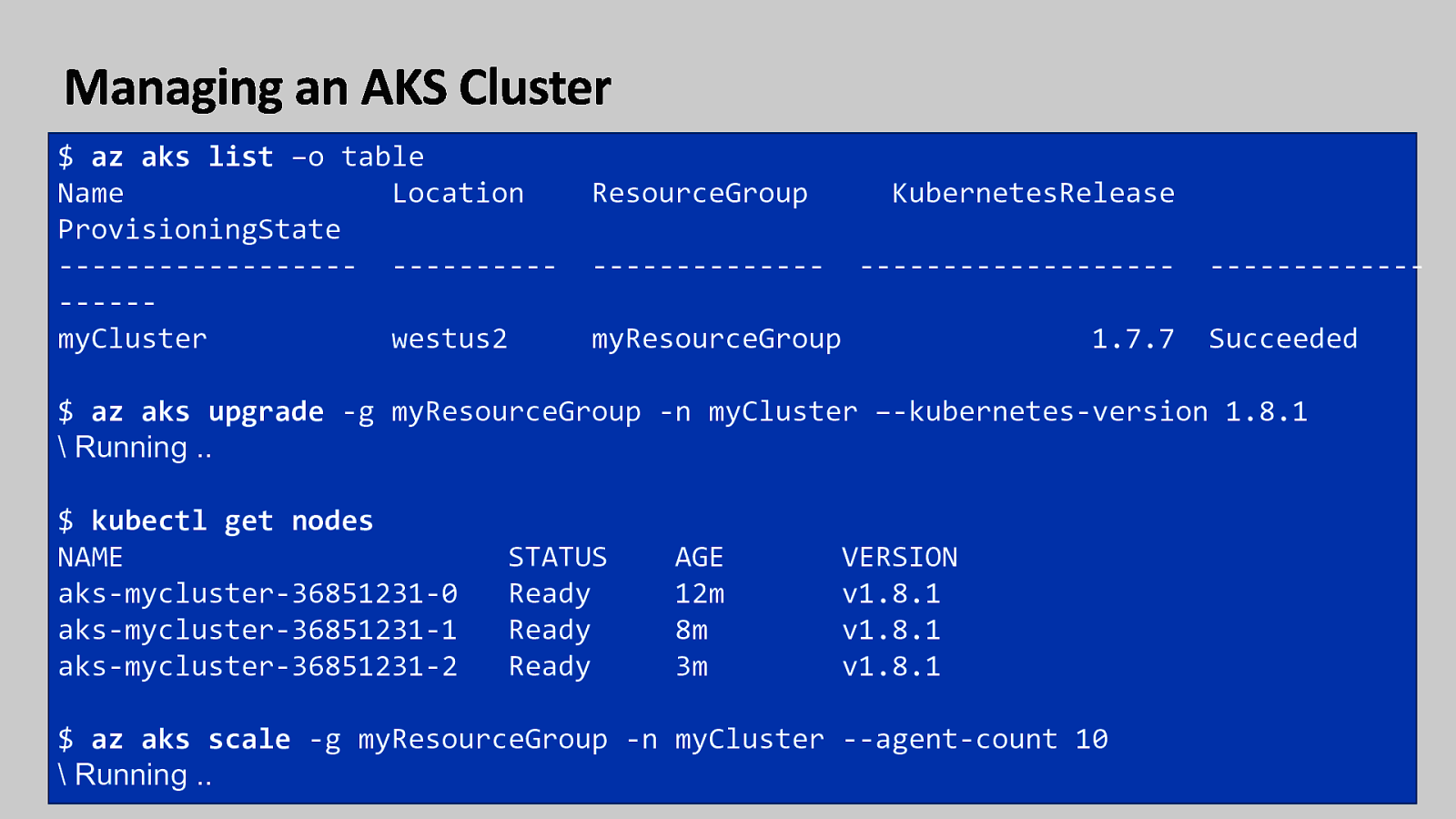
$ az aks list –o table Name Location ProvisioningState ------------------ --------------myCluster westus2 ResourceGroup -------------- KubernetesRelease ------------------- myResourceGroup 1.7.7 ------------Succeeded $ az aks upgrade -g myResourceGroup -n myCluster –-kubernetes-version 1.8.1 \ Running .. $ kubectl get nodes NAME aks-mycluster-36851231-0 aks-mycluster-36851231-1 aks-mycluster-36851231-2 STATUS Ready Ready Ready AGE 12m 8m 3m VERSION v1.8.1 v1.8.1 v1.8.1 $ az aks scale -g myResourceGroup -n myCluster --agent-count 10 \ Running ..
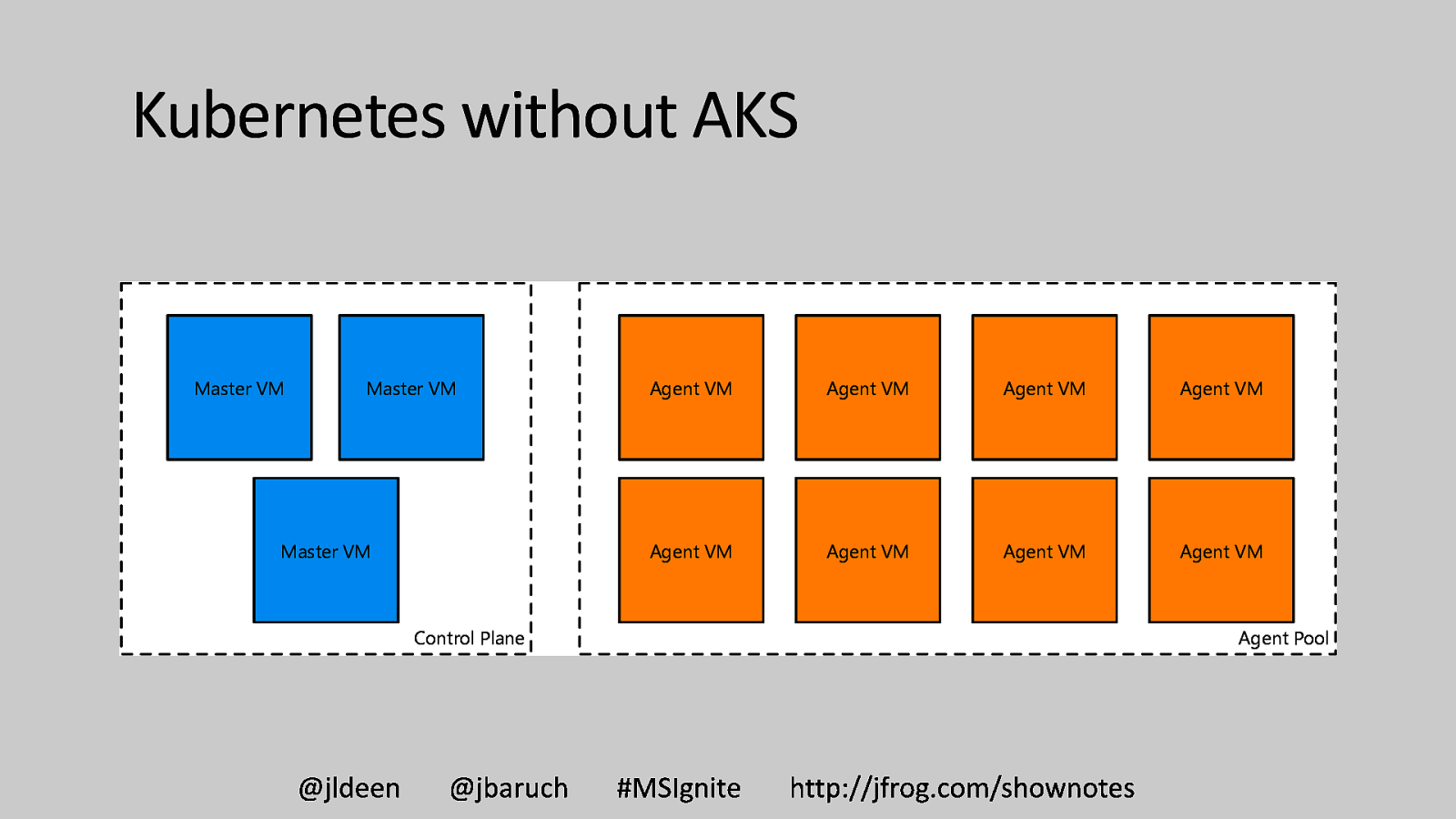
Kubernetes without AKS Master VM Master VM Master VM Control Plane Agent VM Agent VM Agent VM Agent VM Agent VM Agent VM Agent VM Agent VM Agent Pool
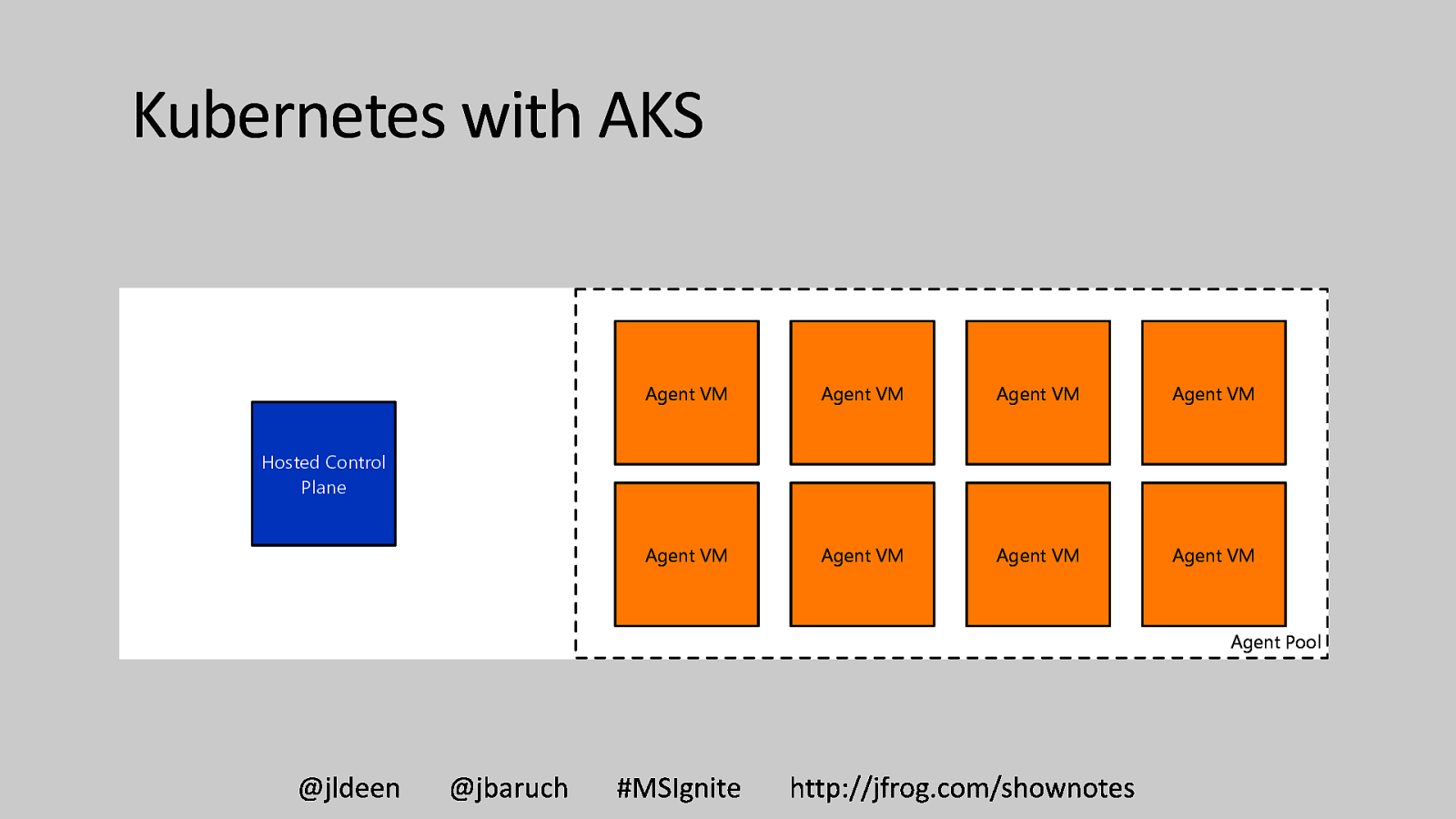
Kubernetes with AKS Agent VM Agent VM Agent VM Agent VM Agent VM Agent VM Agent VM Agent VM Hosted Control Plane Agent Pool
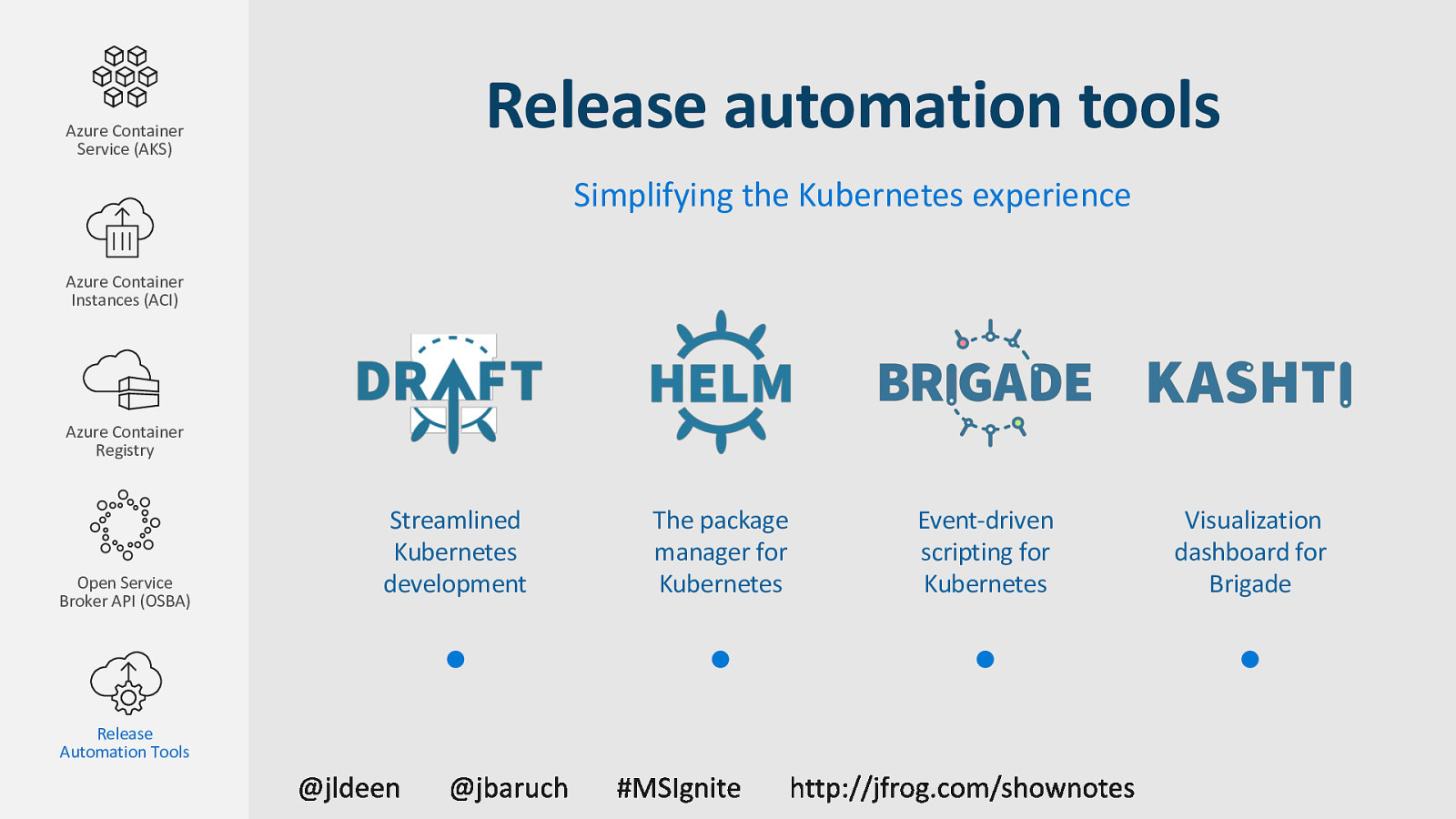
Azure Container Service (AKS) Release automation tools Simplifying the Kubernetes experience Azure Container Instances (ACI) Azure Container Registry Open Service Broker API (OSBA) Release Automation Tools Streamlined Kubernetes development The package manager for Kubernetes Event-driven scripting for Kubernetes Visualization dashboard for Brigade
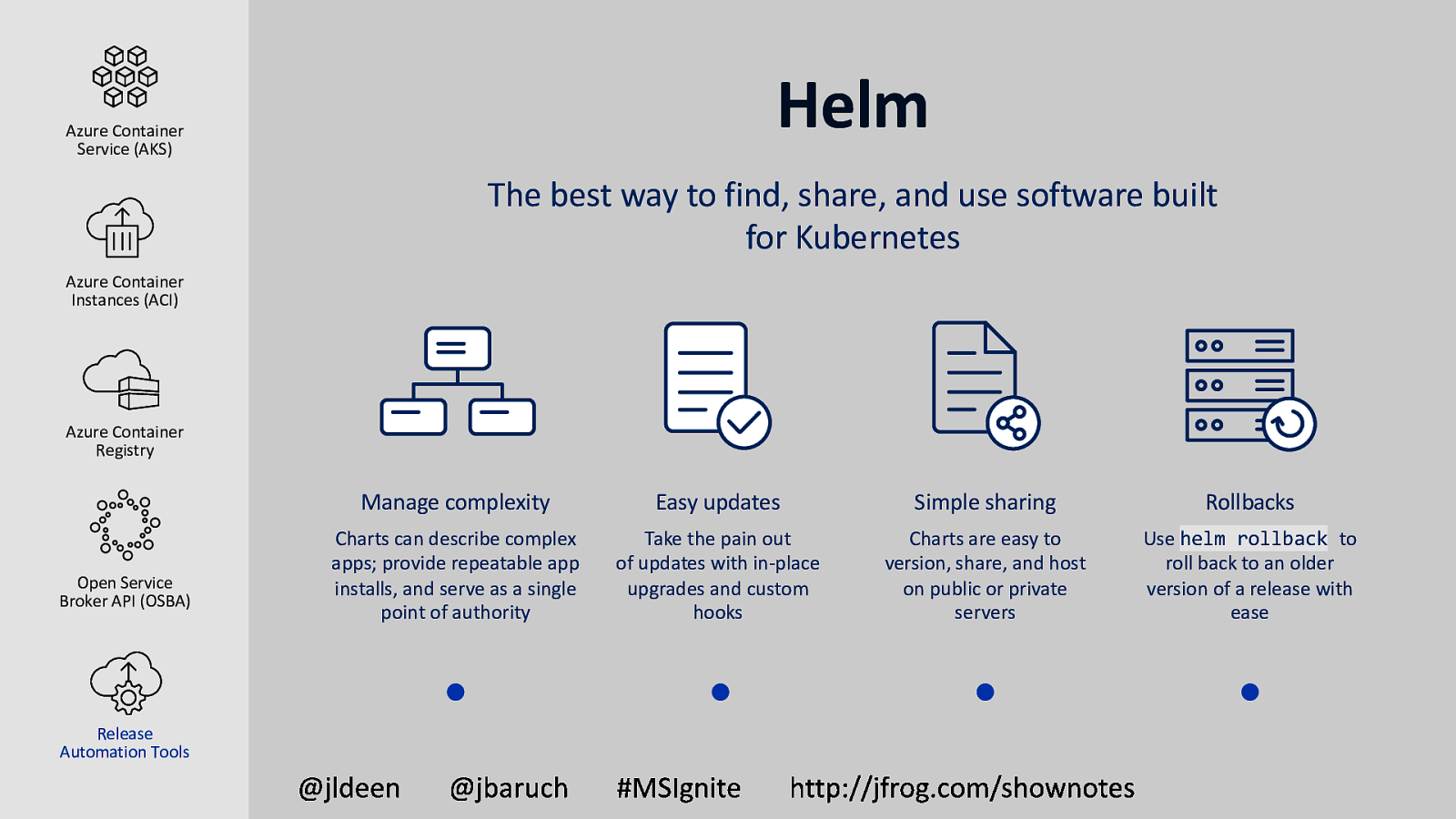
Helm Azure Container Service (AKS) The best way to find, share, and use software built for Kubernetes Azure Container Instances (ACI) Azure Container Registry Open Service Broker API (OSBA) Release Automation Tools Manage complexity Easy updates Simple sharing Rollbacks Charts can describe complex apps; provide repeatable app installs, and serve as a single point of authority Take the pain out of updates with in-place upgrades and custom hooks Charts are easy to version, share, and host on public or private servers Use helm rollback to roll back to an older version of a release with ease
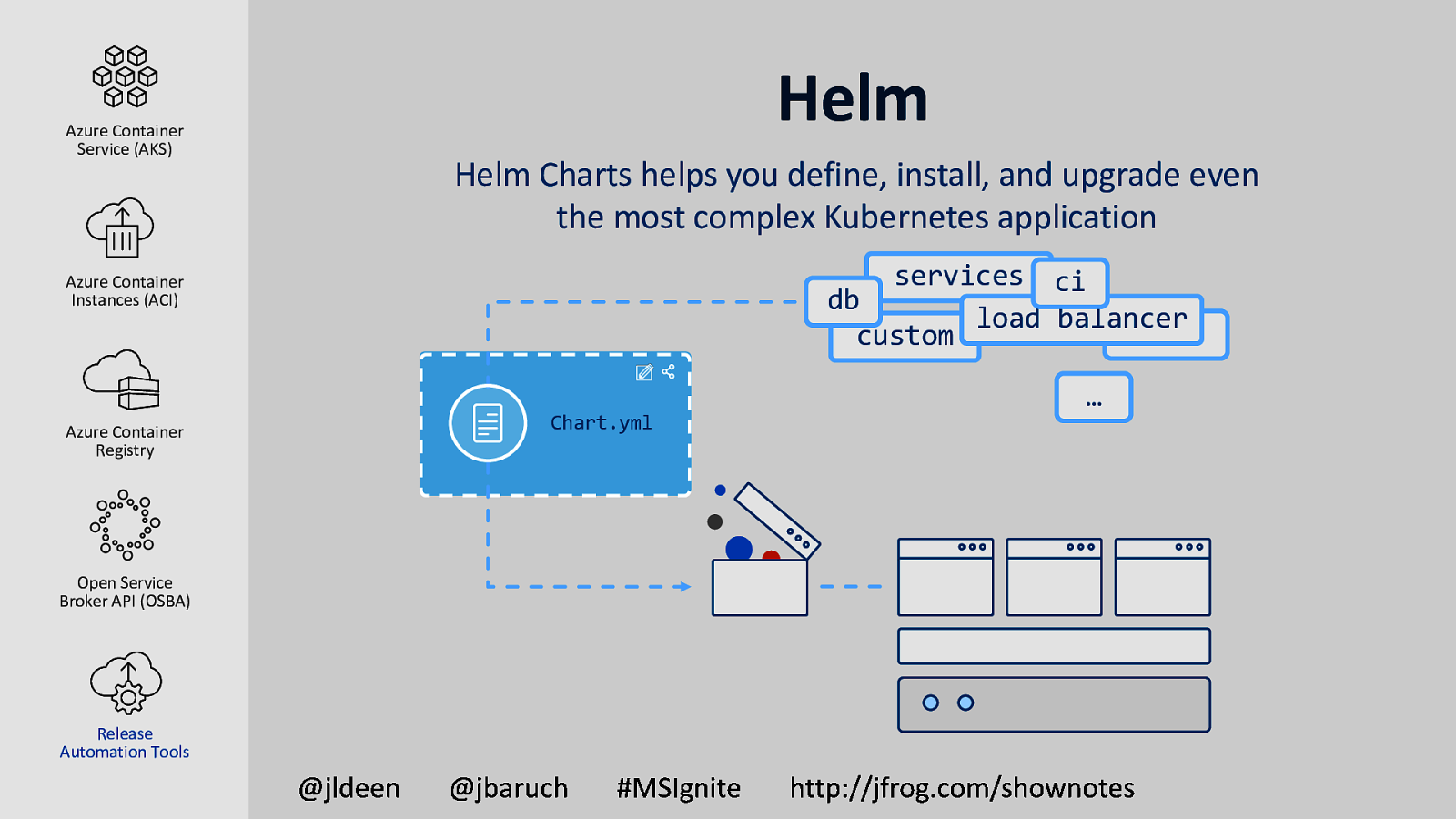
Azure Container Service (AKS) Helm Helm Charts helps you define, install, and upgrade even the most complex Kubernetes application services ci db load balancer custom Azure Container Instances (ACI) … Azure Container Registry Open Service Broker API (OSBA) Release Automation Tools Chart.yml
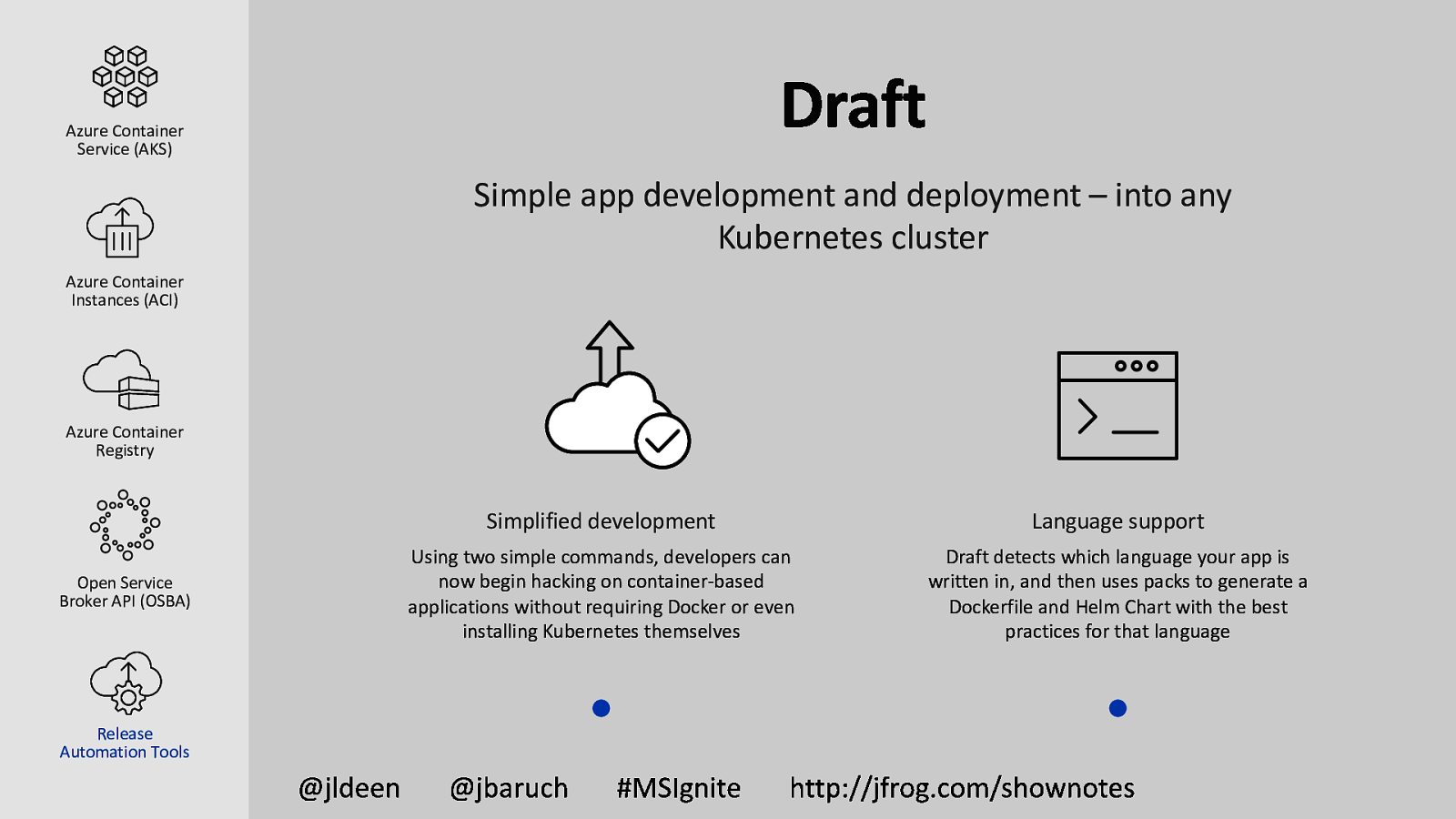
Azure Container Service (AKS) Simple app development and deployment – into any Kubernetes cluster Azure Container Instances (ACI) Azure Container Registry Open Service Broker API (OSBA) Release Automation Tools Simplified development Language support Using two simple commands, developers can now begin hacking on container-based applications without requiring Docker or even installing Kubernetes themselves Draft detects which language your app is written in, and then uses packs to generate a Dockerfile and Helm Chart with the best practices for that language

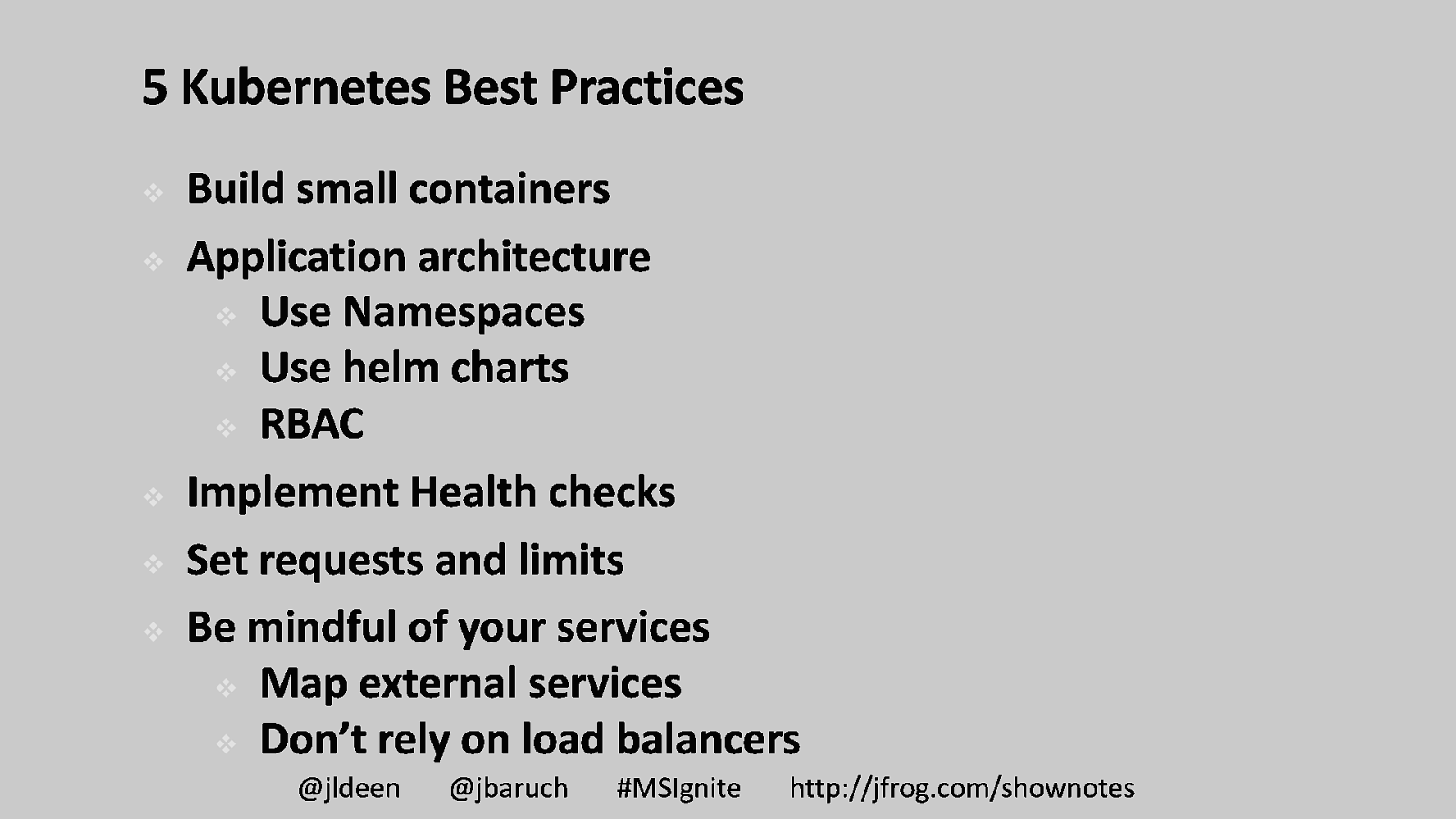
v v v v v v v v v v
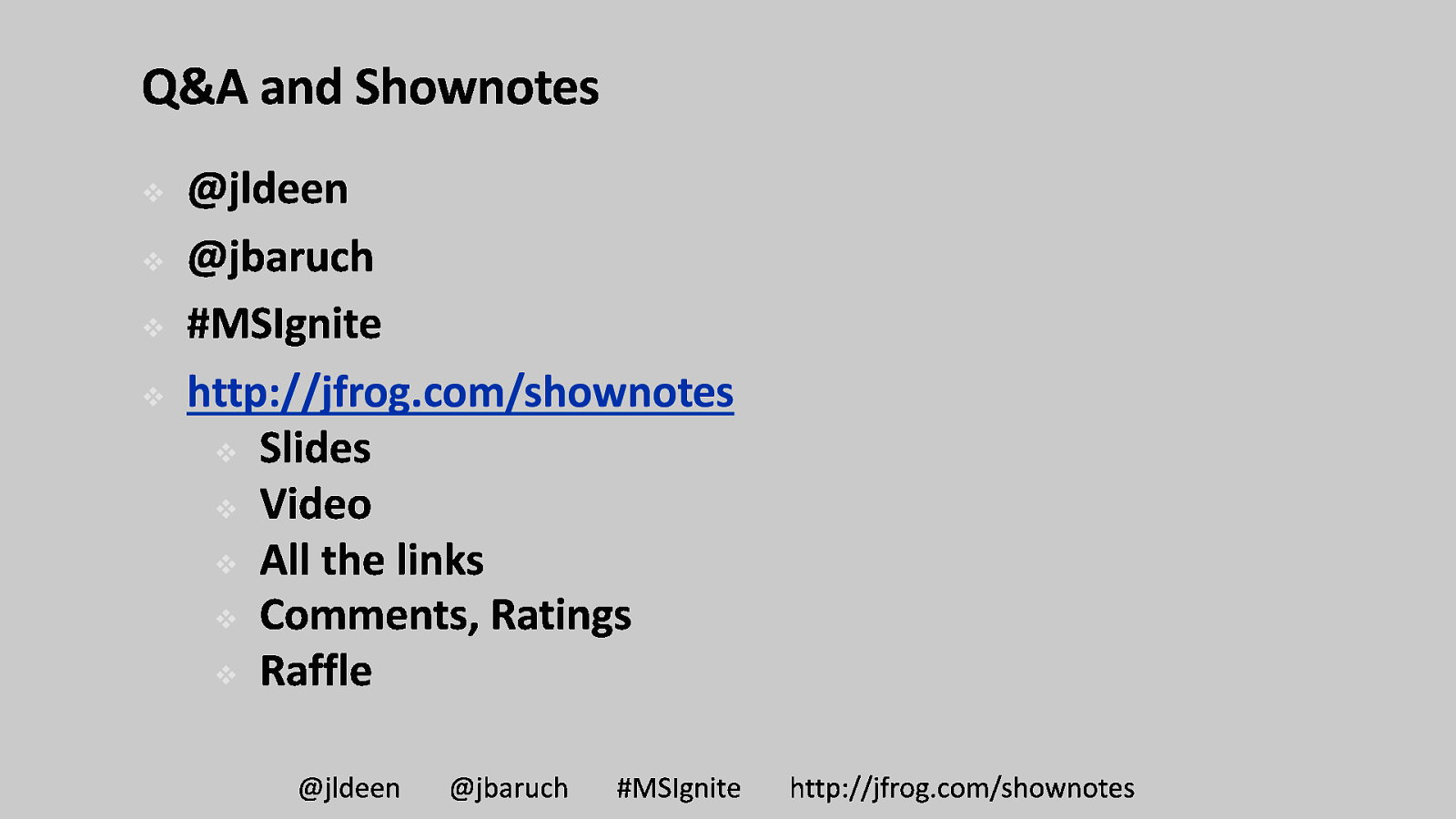
v v v v http://jfrog.com/shownotes v v v v v
Microservices can be hard; understanding container best practices can be hard as those practices are still being discovered. This session aids in minimizing the learning curve with container orchestration, specifically, Kubernetes by bringing DevOps best practices into the mix. We show you how using container tooling specifically built for simplifying the process can provide better orchestration for cloud services, abstraction and encapsulation for your microservices deployments, and visibility into what runs where and why. You will not only walk away with a deeper understanding of this area, but also some hands-on material to help you get started.
